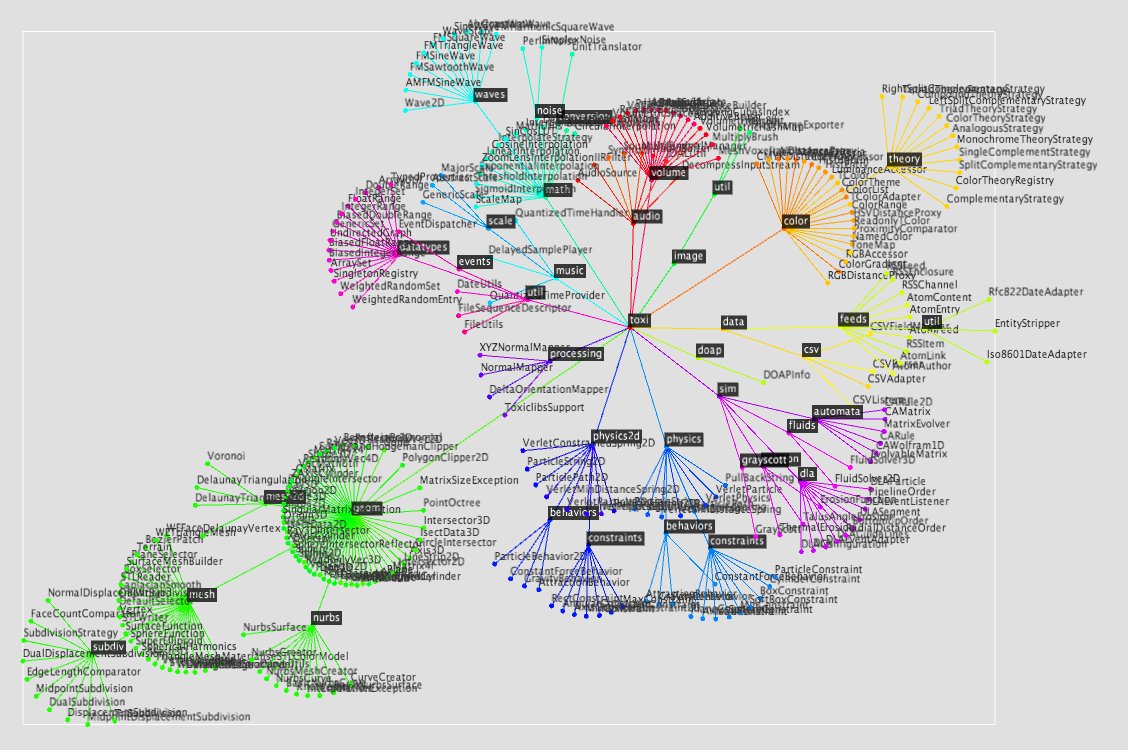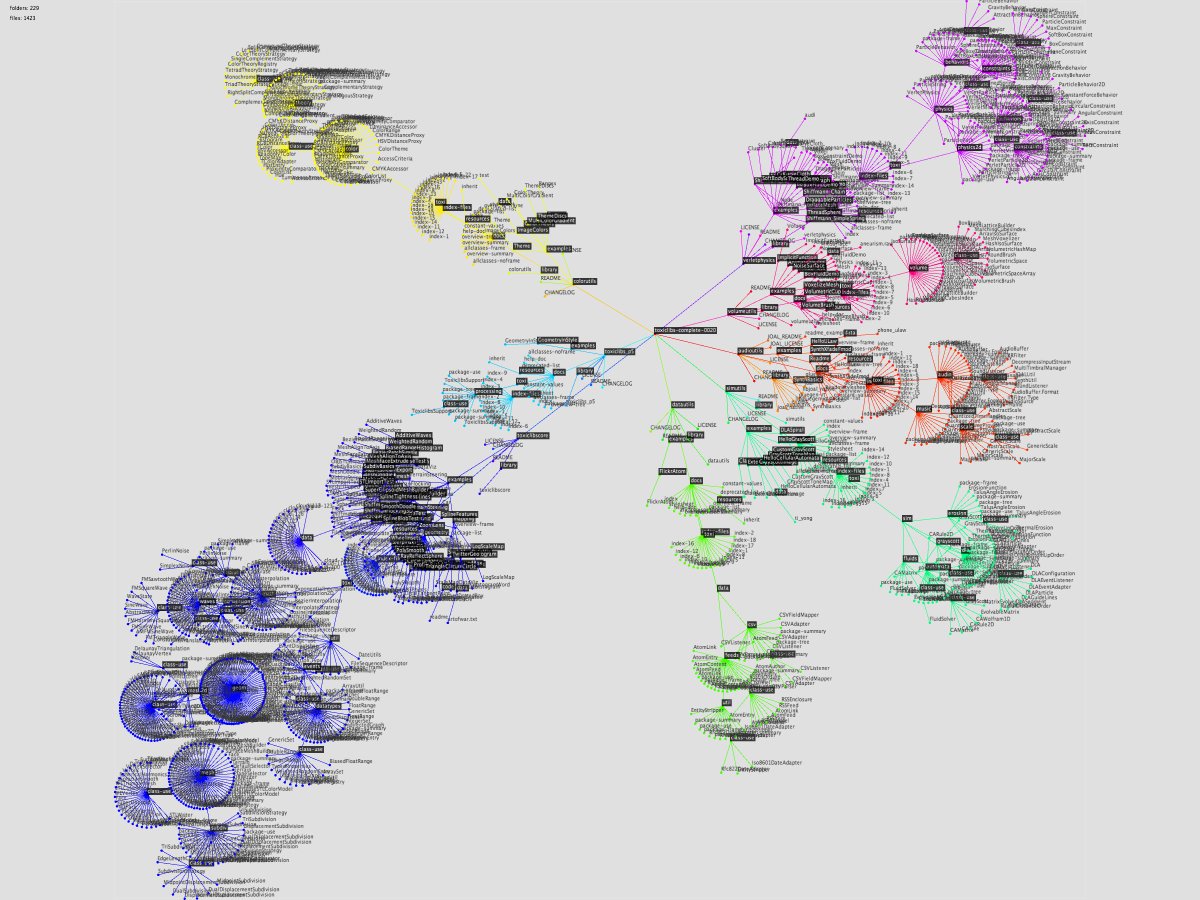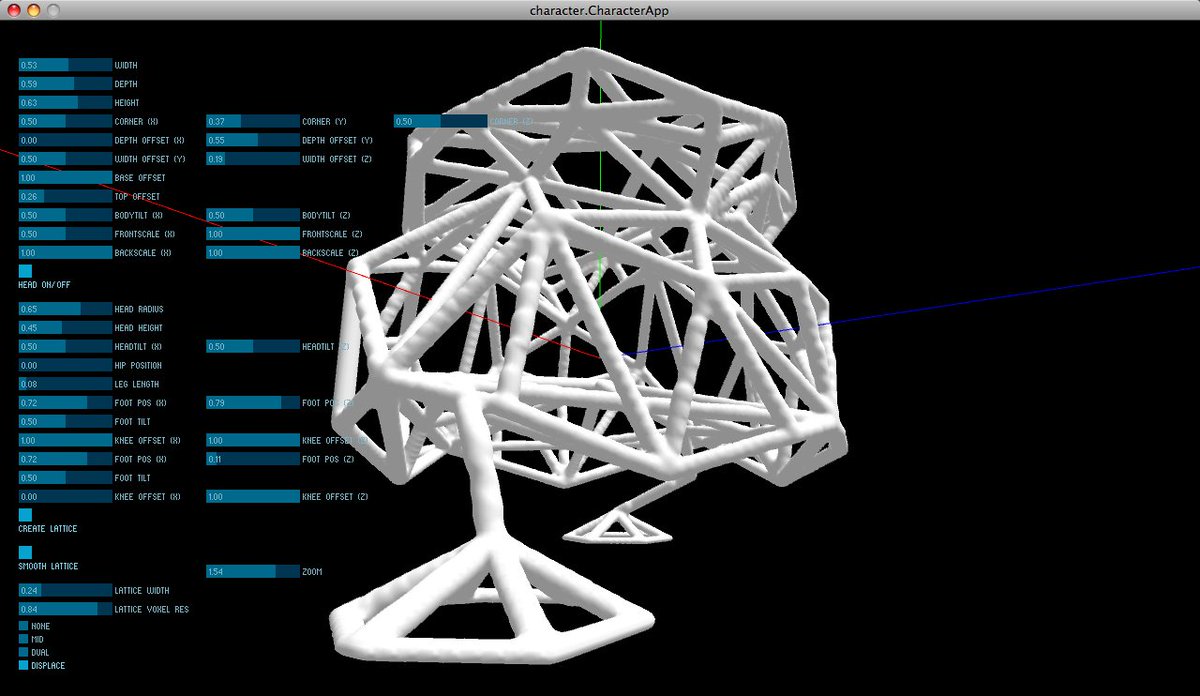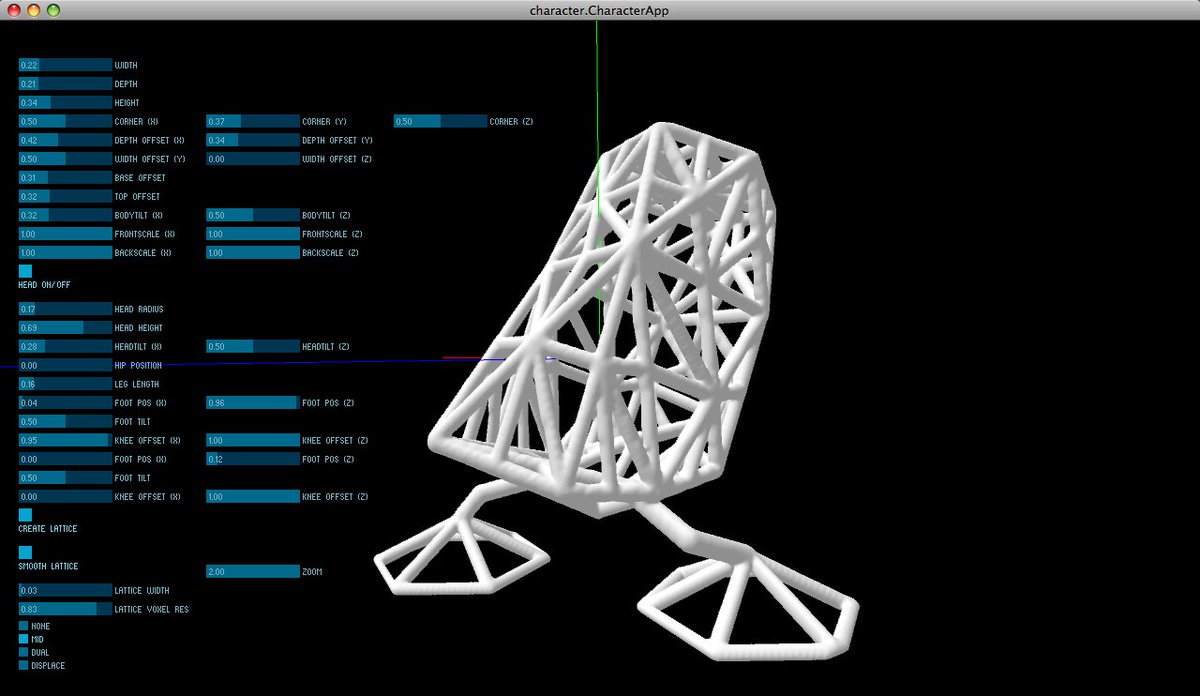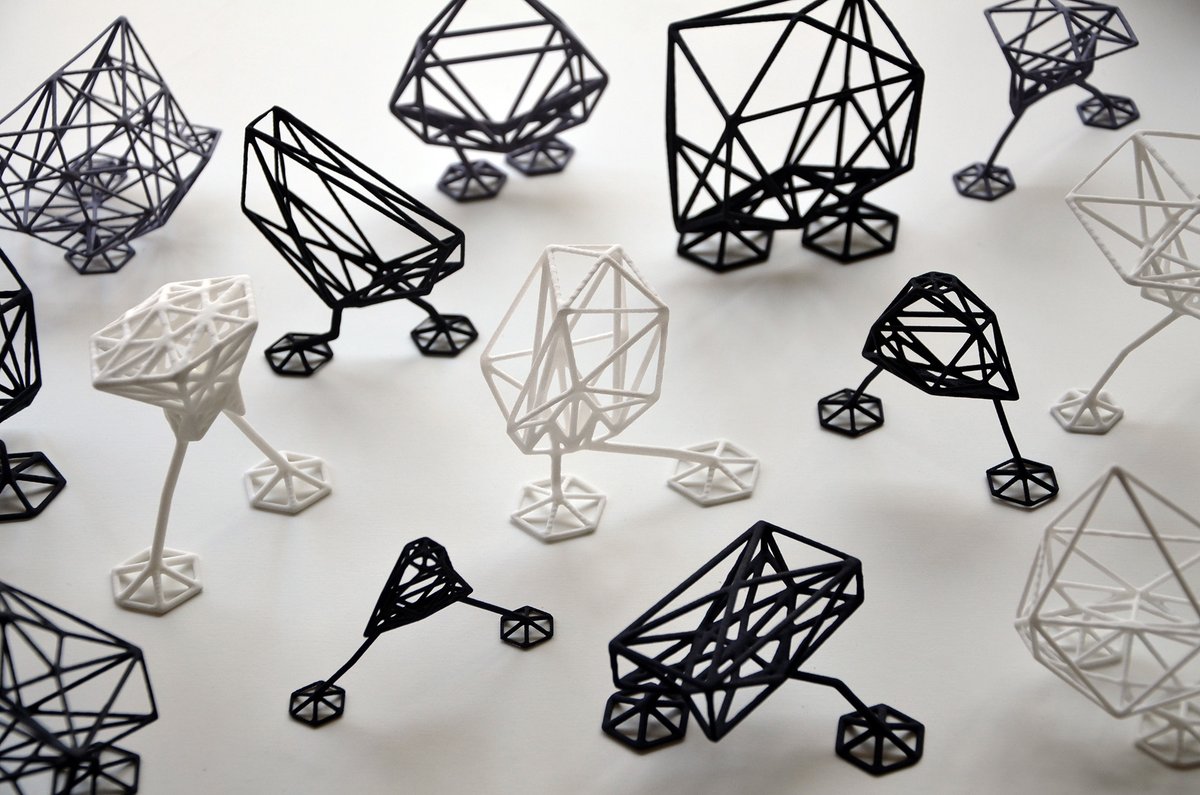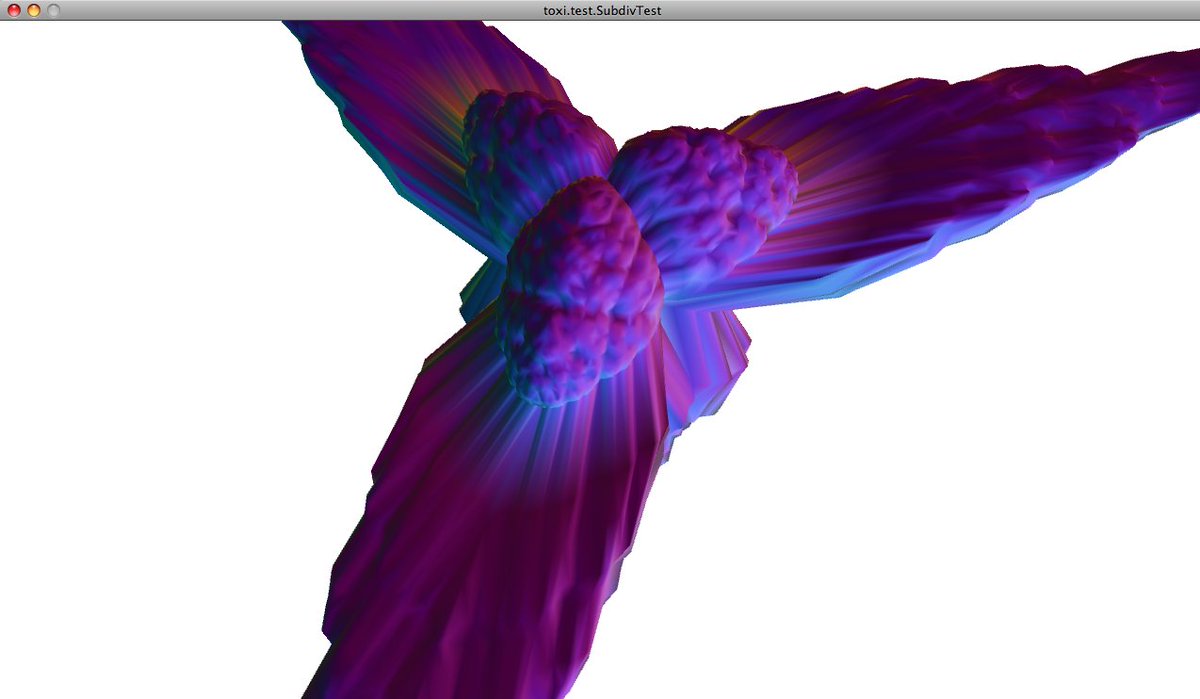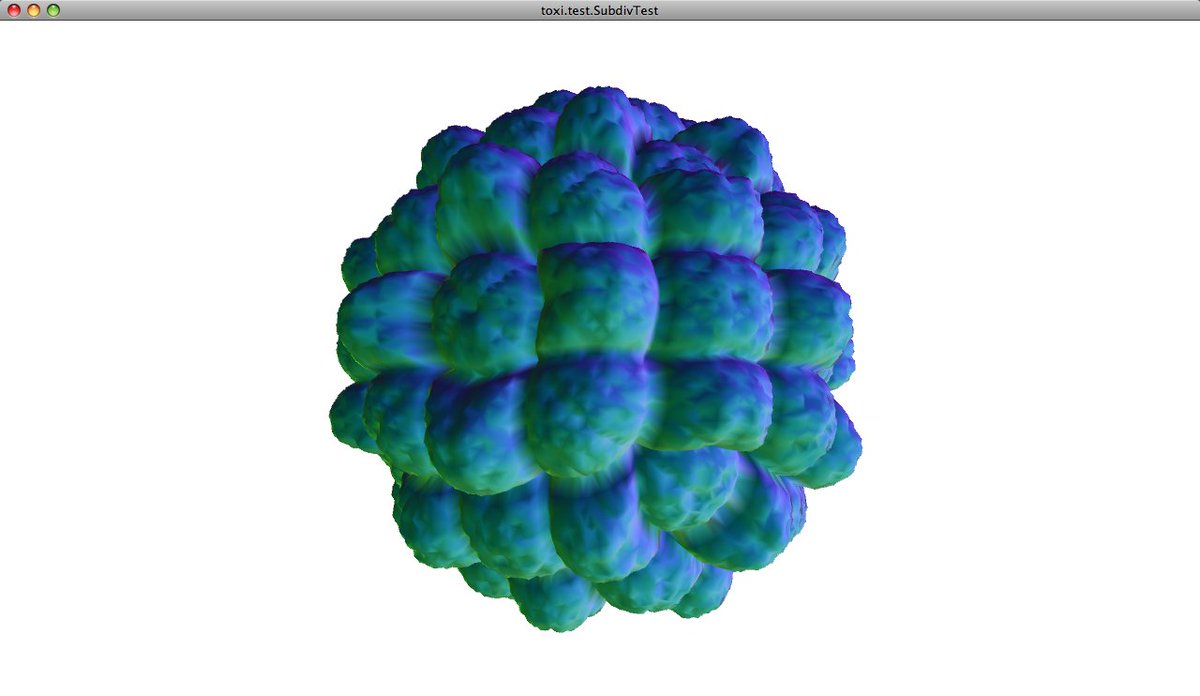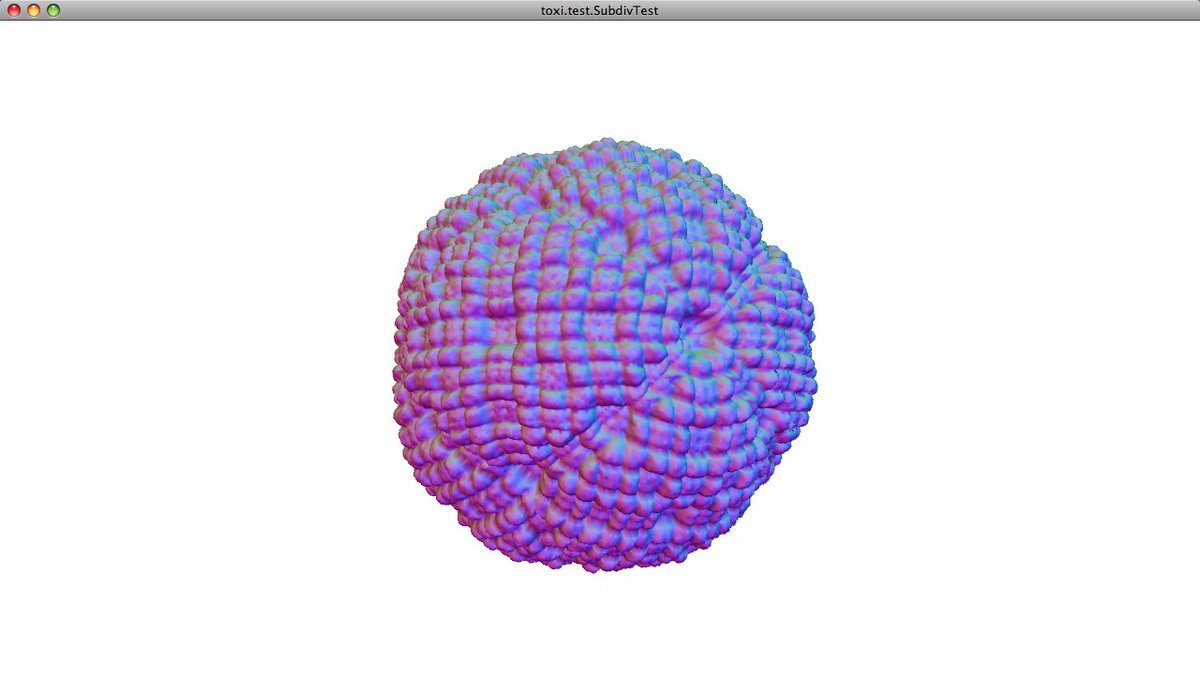Extended bio: I’m a multidisciplinary software engineer, computational designer, artist, researcher, teacher, prolific open source tool maker w/ 25+ yrs experience. Use this thread to learn more about me & selected projects (in no particular order, adding more over time):
(Disclaimer: The results of my professional recent work (since 2016) are unfortunately under NDA, therefore this thread will only include older projects & more general info...)
1/ Since & #39;93 I& #39;ve been working hands-on (concepts ⇄ IXD/UX ⇄ datamodels ⇄ front/back/devops ⇄ fabrication ⇄ hardware): web, generative design/audio/DSP, dataviz/database/semweb, museum/art/tradeshow/light installations, architecture, branding, games, print, dozens of collabs
2/ My practice often starts deep & uses a bottom-up design philosophy (small, isolated ideas/solutions eventually forming larger units), multi-layer feedback, focus on long-term projects/goals/edu, design freedom at any stage, ensuring cohesion, yet avoiding tight coupling...
3/ Since 2006, underpinning my most successful projects (incl. those below) is self-developed polyglot open source tooling for computational design (in the widest sense), specifically http://thi.ng"> http://thi.ng & precursor http://toxiclibs.org"> http://toxiclibs.org , with (still) 1000s of users...
4/ http://thi.ng"> http://thi.ng itself a long-term meta effort consisting of 250+ sub-projects providing aforementioned bottom-up tooling for _all_ projects I’ve worked in past 10+ years. Originally aimed at #Clojure/ #ClojureScript, the focus for past 5 yrs on #TypeScript & some #C11
5/ This long-form essay from 2015 provides a deeper context, partially discussing my early years (since 1988) & general non-Silicon-Valley-tinted work philosophy/learnings from having been in this field for a while: https://medium.com/@thi.ng/the-jacob-s-ladder-of-coding-4b12477a26c1
Let’s">https://medium.com/@thi.ng/t... go see some projects!
Let’s">https://medium.com/@thi.ng/t... go see some projects!
6/ DevArt Co(de)factory was a joint Google Creative Lab / Barbican commission for the Digital Revolution exhibition (2013/14). User designed 3D printed sculptures created via visual programming/modelling. Entire project open source: https://github.com/postspectacular/devart-codefactory">https://github.com/postspect... #clojure #rpi #3dprint
7/ DevArt (above project) video feature by Google (Fun fact: I actually did work on this bench for almost 8 years - a huge productivity booster - though not just daydreaming about trees as that video seems to portray  https://abs.twimg.com/emoji/v2/... draggable="false" alt="😅" title="Lächelndes Gesicht mit offenem Mund und Angstschweiß" aria-label="Emoji: Lächelndes Gesicht mit offenem Mund und Angstschweiß">): https://www.youtube.com/watch?v=USrM43hZSOQ">https://www.youtube.com/watch...
https://abs.twimg.com/emoji/v2/... draggable="false" alt="😅" title="Lächelndes Gesicht mit offenem Mund und Angstschweiß" aria-label="Emoji: Lächelndes Gesicht mit offenem Mund und Angstschweiß">): https://www.youtube.com/watch?v=USrM43hZSOQ">https://www.youtube.com/watch...
8/ In 2012/13 I collaborated w/ Precedent London on an audio-responsive identity system for Leeds College of Music: Strange attractors, billions(!) of particles, desktop app, ad-hoc AWS render farm for super-hires print/video asset generation/transcoding https://vimeo.com/69896668 ">https://vimeo.com/69896668&...
9/ Some screenshots of the Leeds College of Music identity generator app, as well as a video of the associated cloud based render & asset manager (all entirely developed by myself):
https://www.youtube.com/watch?v=WyVI5vnp570">https://www.youtube.com/watch...
#Clojure #OpenCL #OpenGL #GLSL #JavaScript
https://www.youtube.com/watch?v=WyVI5vnp570">https://www.youtube.com/watch...
#Clojure #OpenCL #OpenGL #GLSL #JavaScript
10/ In 2012 I collaborated w/ @tellart & others on another large Google project: Chrome Web Lab @ Science Museum London. My roles incl. design/dev of custom fiducial marker system (Lab Tags), their generator (350k+) for print, decoder & dispenser UI... https://www.youtube.com/watch?v=RrgjufJhmwk">https://www.youtube.com/watch...
11/ ...the 10m wide & tall 6-screen Lab Tag Explorer wall visualized visitors as physics-based particle flocks, displayed various stats and was augmented by (+ synced with) pen drawings performed by a 2m tall industrial robot (which I consulted on too) https://vimeo.com/210692040 ">https://vimeo.com/210692040...
12/ The wall software was split into a #Clojure/ #OpenCL based websocket server for data aggregation, robot interaction, physics/flocking sim, sending 30fps stream of particles updates to 2x JS/WebGL UIs running on Chrome (3x screens each) https://www.youtube.com/watch?v=G6ecQQB7FbE">https://www.youtube.com/watch...
13/ Gathered prev. experience w/ custom computer vision markers through work on Fid.gen, a physics-based marker generator nominated for Design of the Year 2009. This one was written w/ Processing/toxiclibs & used for Lexus @ NAIAS Detroit 2008 and... https://www.youtube.com/watch?v=tv3jQG-BDzg">https://www.youtube.com/watch...
14/ ...final year student exhibition @ London College of Fashion 2007/8 for which I too designed & dev& #39;d the gestural table UI (whilst consulting at @movingbrands) - in both cases the custom markers were used w/ @mkalten& #39;s amazing reacTIVision software: https://vimeo.com/1393556 ">https://vimeo.com/1393556&q...
15/ A 2013 collaboration w/ @ODIHQ to produce this and other London-centric ambient data visualizations for their very first summit, e.g. here showing knife crime data from 2012/13. Generated entirely from UK ONS data in #Clojure, rendered in #Luxrender on 200 AWS EC2 instances
16/ Speaking of dataviz, the http://thi.ng/geom-clj ">https://thi.ng/geom-clj&... 2d/3d geometry toolkit (2011-16) was instrumental for most aforementioned projects & also includes a module for declarative dataviz. More details on Github & this workshop report about using #LinkedData: https://medium.com/@thi.ng/workshop-report-building-linked-data-heatmaps-with-clojurescript-thi-ng-102e0581225c">https://medium.com/@thi.ng/w...
17/ Earlier, in 2009 & 2010 I organized & produced community showreels to document the amazing work done by Processing & http://toxiclibs.org"> http://toxiclibs.org users at that time when the computational design crowd was still very small/young(er). Take a look!  https://abs.twimg.com/emoji/v2/... draggable="false" alt="👀" title="Augen" aria-label="Emoji: Augen"> https://www.youtube.com/watch?v=U9ifgR_7XqU">https://www.youtube.com/watch...
https://abs.twimg.com/emoji/v2/... draggable="false" alt="👀" title="Augen" aria-label="Emoji: Augen"> https://www.youtube.com/watch?v=U9ifgR_7XqU">https://www.youtube.com/watch...
17b/ For completeness sake, here& #39;s the 2010 toxiclibs showreel: https://www.youtube.com/watch?v=lrdevgQ2VKA
More">https://www.youtube.com/watch... to come...
More">https://www.youtube.com/watch... to come...
18/ The volumetric/voxel tools used for some entries in above showreel were originally written in 2008, whilst working on my first 3D print, a #ReactionDiffusion #generative typographic sculpture for a special issue/interview in Print Magazine. More pics: https://flickr.com/photos/toxi/albums/72157604724789091">https://flickr.com/photos/to...
19/ http://thi.ng/simplecl ">https://thi.ng/simplecl&... was one of the first http://thi.ng"> http://thi.ng #Clojure projects & instrumental for the above mentioned Leeds & Web Lab projects, but also for building this experimental volumetric data PBR renderer (w/ Clojure REPL): http://thi.ng/raymarchcl ">https://thi.ng/raymarchc... (2012-13)
19a/ As an aside, in prep for another project, I wrote a tiny ambient occlusion renderer (w/ anti-aliasing) for isometric landscapes in <150 lines of #Java & #toxiclibs (2011):
19b/ Last tangent on this theme: These structures were part of a self-directed research project (also 2012) into Sparse Voxel Octree implementations (in Clojure) w/ aim of building a slicer for DLP-based 3D printing (resin), using Gyroid minimal surfaces for internal supports
20/ To further illustrate the bottom-up design philosophy underlying both @thing_umbrella and @toxiclibs, the latter& #39;s #VerletPhysics engine was originally written for this cute @universalevery collab for @nokia (2008), but still widely used today... https://www.youtube.com/watch?v=g20QOQP6kSU">https://www.youtube.com/watch...
21/ Another @universalevery & @freefarm collab (2008): Forever at the @V_and_A was a fully generative audio-visual install w/ bi-directional feedback gfx⇄music and a rule-based stochastic composition system to create a fully dynamic interplay between both https://www.youtube.com/watch?v=LQ988B5vlyo">https://www.youtube.com/watch...
22/ To promote the V&A Forever exhibit ( https://abs.twimg.com/emoji/v2/... draggable="false" alt="👆" title="Rückhand Zeigefinger nach oben" aria-label="Emoji: Rückhand Zeigefinger nach oben">), we decided to generate & print 5000 unique postcards, each based on a different snapshot of the physics sim driving this single line/rope and here rendered to create a cloth like appearance. Later also shown at SIAD Sheffield
https://abs.twimg.com/emoji/v2/... draggable="false" alt="👆" title="Rückhand Zeigefinger nach oben" aria-label="Emoji: Rückhand Zeigefinger nach oben">), we decided to generate & print 5000 unique postcards, each based on a different snapshot of the physics sim driving this single line/rope and here rendered to create a cloth like appearance. Later also shown at SIAD Sheffield
23/ For the poster of that Designing Seeds show (2009) we ( @universalevery) re-purposed my earlier @Channel4 New Shoots project, using #DiffusionLimitedAggregation to grow typography from 5+ million particles. We also showed Forever, running on 6 Macbooks (operated by my son)
24/ Slight time jump: After working extensively w/ #RaspberryPI& #39;s on DevArt in 2014, I went deep into #baremetal ARM coding on STM32 dev boards, building a programmable synth (plus #Forth virtual machine) & teaching related workshops - thanks to all who were part of this journey!
24a/ Here are 2 videos live recordings of the synth in action:
- https://www.youtube.com/watch?v=41FKE3PYjnE
-">https://www.youtube.com/watch... https://www.youtube.com/watch?v=3lL-ZxyrHiE
Soundcloud">https://www.youtube.com/watch... playlist w/ 40+ example tracks: https://soundcloud.com/forthcharlie/sets/stm32f4
Project">https://soundcloud.com/forthchar... on Github: http://thi.ng/synstack ">https://thi.ng/synstack&...
- https://www.youtube.com/watch?v=41FKE3PYjnE
-">https://www.youtube.com/watch... https://www.youtube.com/watch?v=3lL-ZxyrHiE
Soundcloud">https://www.youtube.com/watch... playlist w/ 40+ example tracks: https://soundcloud.com/forthcharlie/sets/stm32f4
Project">https://soundcloud.com/forthchar... on Github: http://thi.ng/synstack ">https://thi.ng/synstack&...
25/ Flatworld was a never officially released library for unfolding 3D meshes for 2D sheet materials, initially created for a data viz/sculpture workshops at @HEADGENEVE (& others) in 2010, but then mainly used for this @V_and_A installation (May 2011): https://www.youtube.com/watch?v=5b1C2xLWB-w">https://www.youtube.com/watch...
25a/ This install ( https://abs.twimg.com/emoji/v2/... draggable="false" alt="👆" title="Rückhand Zeigefinger nach oben" aria-label="Emoji: Rückhand Zeigefinger nach oben">) was related to the William Morris exhibit & made w/ Java/Clojure/Processing (runtime/server), toxiclibs (geometry, fabrication files for robo & laser cutters), JS (iPad UI). Massive thanks to @manomine, @sermad & @supernat13 for helping w/ setup!
https://abs.twimg.com/emoji/v2/... draggable="false" alt="👆" title="Rückhand Zeigefinger nach oben" aria-label="Emoji: Rückhand Zeigefinger nach oben">) was related to the William Morris exhibit & made w/ Java/Clojure/Processing (runtime/server), toxiclibs (geometry, fabrication files for robo & laser cutters), JS (iPad UI). Massive thanks to @manomine, @sermad & @supernat13 for helping w/ setup!  https://abs.twimg.com/emoji/v2/... draggable="false" alt="😍" title="Lächelndes Gesicht mit herzförmigen Augen" aria-label="Emoji: Lächelndes Gesicht mit herzförmigen Augen">
https://abs.twimg.com/emoji/v2/... draggable="false" alt="😍" title="Lächelndes Gesicht mit herzförmigen Augen" aria-label="Emoji: Lächelndes Gesicht mit herzförmigen Augen">
26/ In early 2004, whilst helping on the Bagel graphics engine of early @Processing versions, I created Base26, an interactive realtime 3D visualization of all English four-letter words, interpreting letters as spatial coords (and initial letters as sets to morph between)
26a/ These are high-res versions created for various exhibitions & print media. Each image shows a set of 4-letter words starting w/ same initial. The last 3 letters of each word interpreted as XYZ positions, different colors are used for word type (noun, verb, adjective etc.)
26b/ The wireframe mesh surrounding each word/point is a 3D histogram of the overall usage frequency of each particular trigram across the entire set of words. More bulging forms = higher frequency. E.g. the trigram "ear" (fear, wear, tear) vs. "oft" (soft, loft...)
27/ Over the years I& #39;ve always enjoyed working on/with datastructures/databases as much as all the more visual work you might know. Since 2004/5 I& #39;ve repeatedly worked on/off with #RDF / #LinkedData / #GraphDatabases, built several related tools & semi-large related projects...
28/ http://thi.ng/fabric ">https://thi.ng/fabric&qu... was a #Clojure project centred around a general compute graph, on which sat a triple-based fact graph w/ #SPARQL-like query DSL, subscribable stored queries & #LinkedData server/endpoint, able to emit results in multiple formats (JSON-LD, CSV, NT etc)
29/ Years before that, in 2005, one of my first #semweb projects was FOAFgen, a vCard batch converter to generate @libbymiller & @danbri& #39;s Friend-of-a-Friend (FOAF) social graph format - a time before social media as we know it today: http://web.archive.org/web/20050329015144/http://toxi.co.uk/foafgen/">https://web.archive.org/web/20050...
30/ Having implemented numerous folksonomy/tagging systems over the years (in many different databases), I& #39;m still proud of the name-dropping in official MySQL slide decks about my earliest attempts/solutions ("getting it almost right"  https://abs.twimg.com/emoji/v2/... draggable="false" alt="😂" title="Gesicht mit Freudentränen" aria-label="Emoji: Gesicht mit Freudentränen">) in this field:
https://abs.twimg.com/emoji/v2/... draggable="false" alt="😂" title="Gesicht mit Freudentränen" aria-label="Emoji: Gesicht mit Freudentränen">) in this field:
https://www.slideshare.net/edbond/tagging-and-folksonomy-schema-design-for-scalability-and-performance">https://www.slideshare.net/edbond/ta...
https://www.slideshare.net/edbond/tagging-and-folksonomy-schema-design-for-scalability-and-performance">https://www.slideshare.net/edbond/ta...
31/ As mentioned earlier on in this thread, #toxiclibs was a collection of ~300 "building blocks for computational design" (for Java/Processing) & formed basis for most of my work between 2006-2011... (These visualizations were created as exercise during a workshop at @V_and_A)
31a/ Toxiclibs included ready-to-use tools for many topics: physics engine w/ Verlet integration & behaviors, volumetric modelling, meshes, color theory/spaces, geometry/linalg, intersectors, interpolators, oscillators, reaction-diffusion, cellular automata, fluid sim, data struc
32/ Voxel modelling in action: Voxel Posse, my last project for @universalevery, a collection of ~100 3D printed, semi-random wireframe characters. Basic physics-based skeleton/joints setup & gravity sim to prune failures, final selection by my 10yr old son. Concept by @mattpyke
32a/ In part, this project was based on prior research (early 2010) about combining recursive mesh subdivisions with volumetric modelling. Also realised w/ toxiclibs, printed at @shapeways. Here a 6x subdivided cube with edges retraced in voxel space to visualize the new topology
32b/ Some further (early) examples of this subdivision research, here more with a view at biomimicry and morphogenesis, later leading to the http://thi.ng/morphogen ">https://thi.ng/morphogen... DSL, but also workshops w/ Architecture departments at ETH Zurich & Städelschule Frankfurt

 Read on Twitter
Read on Twitter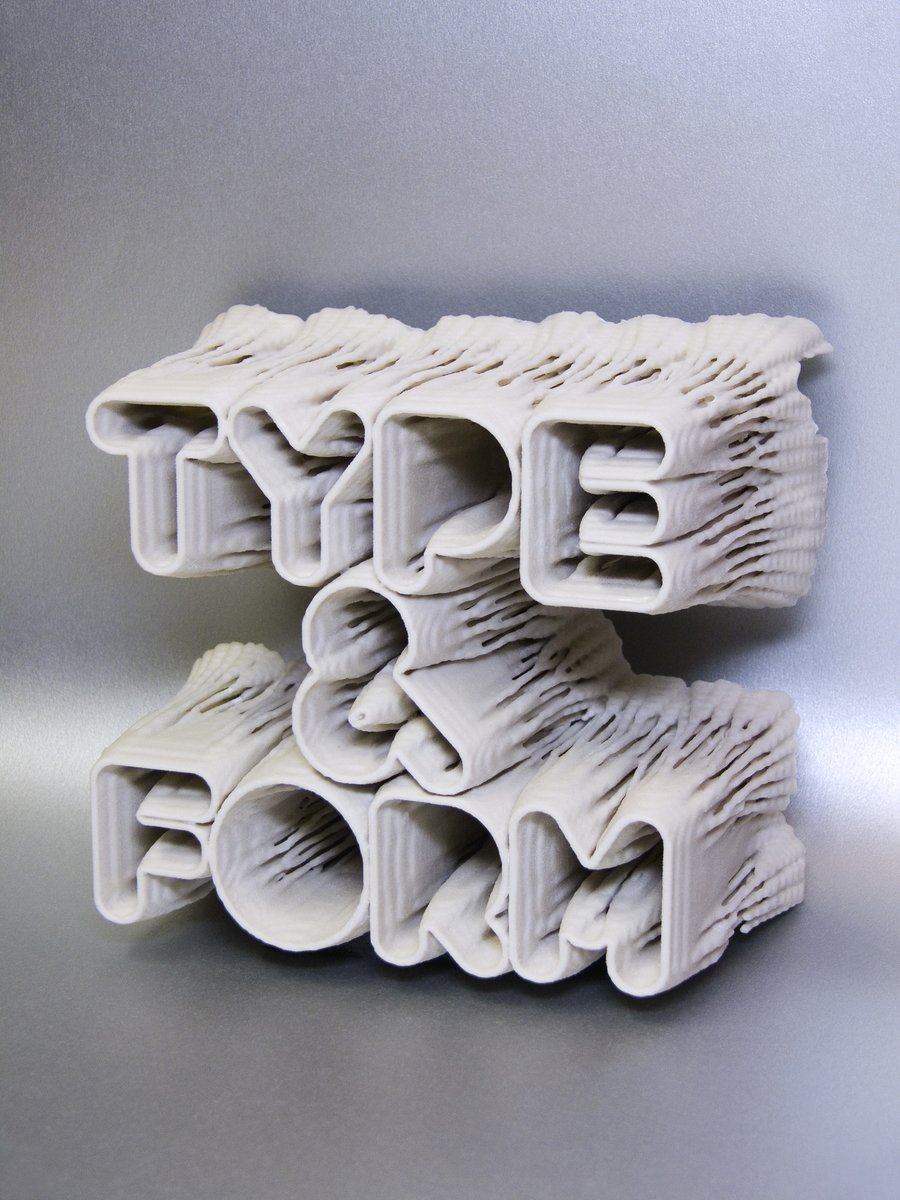




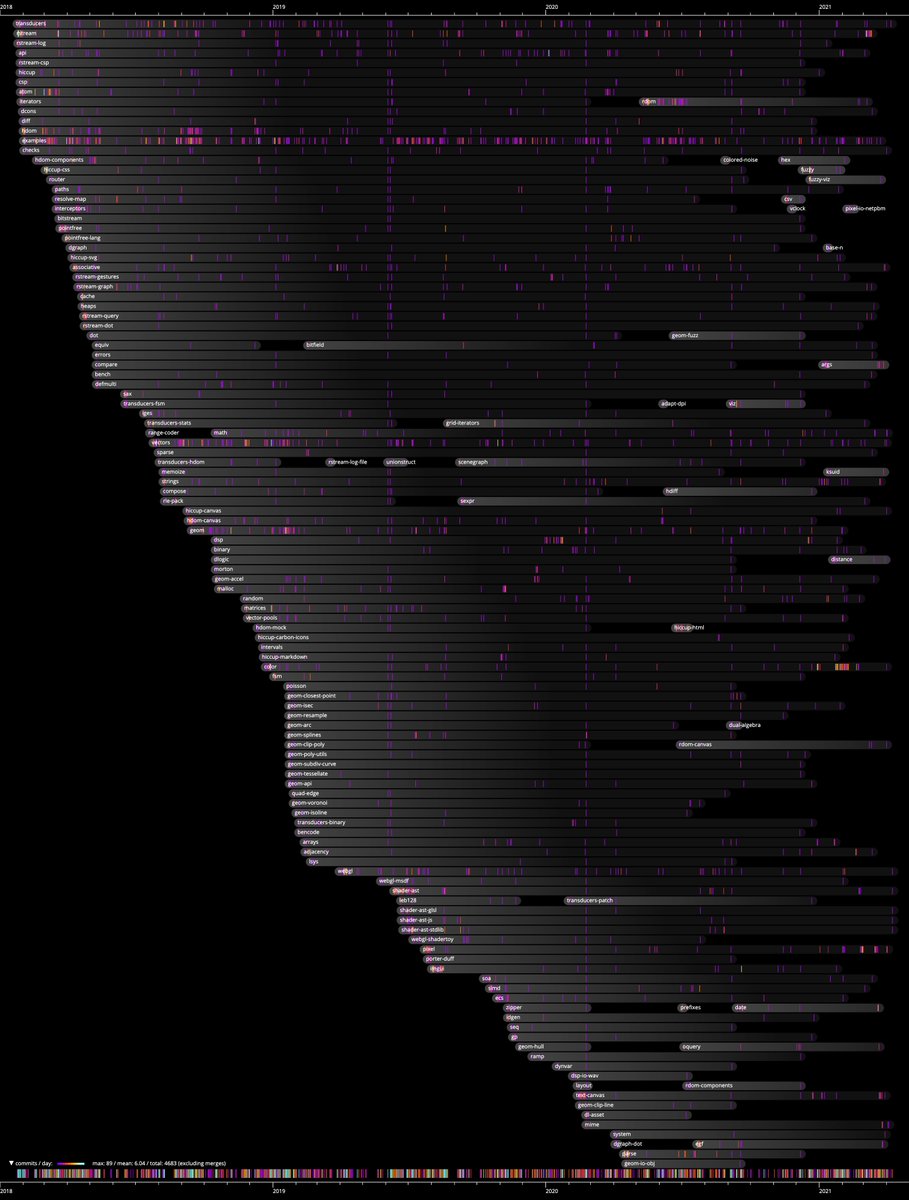


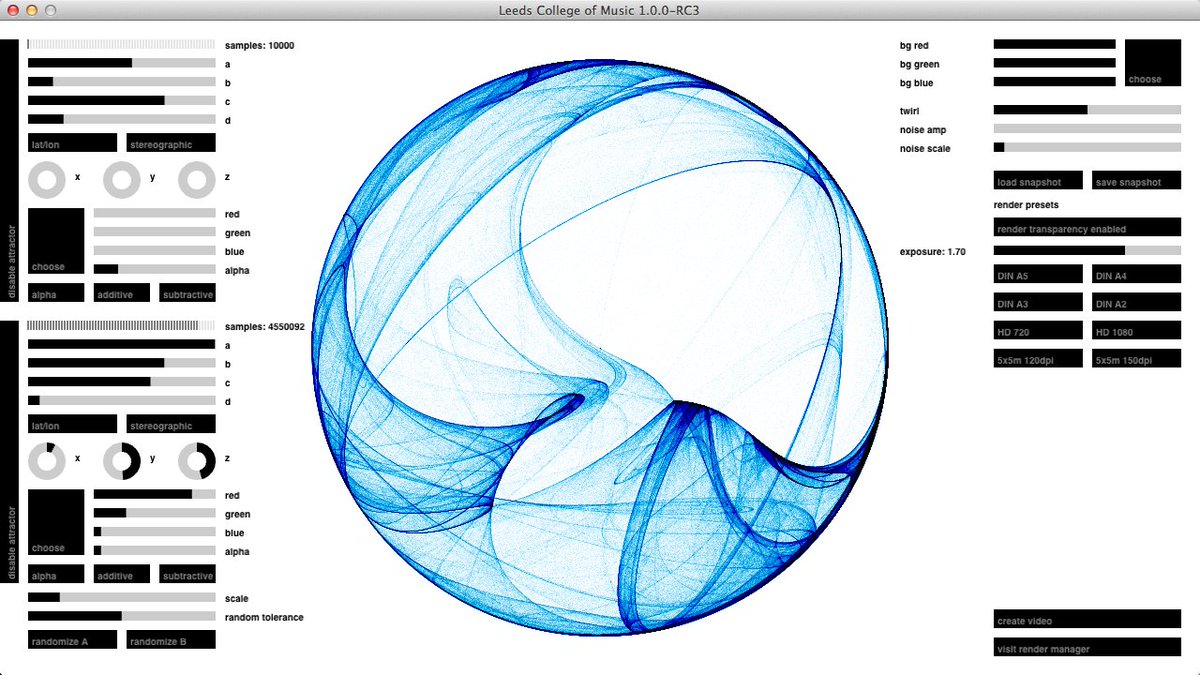

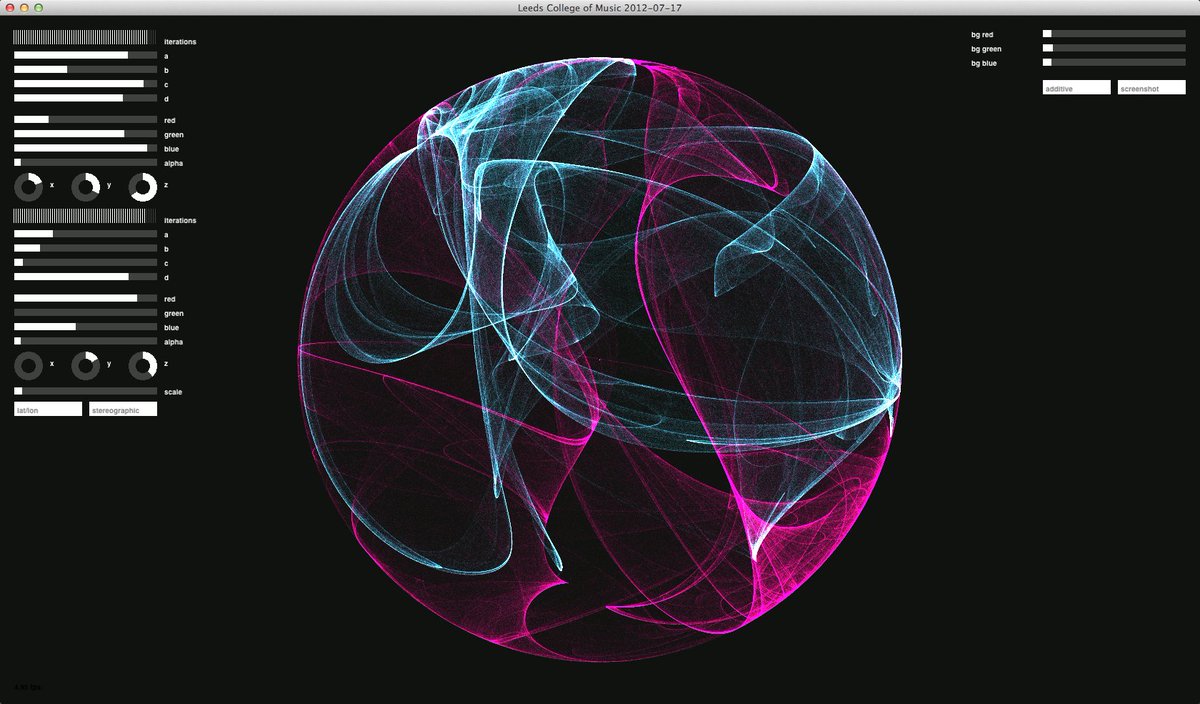
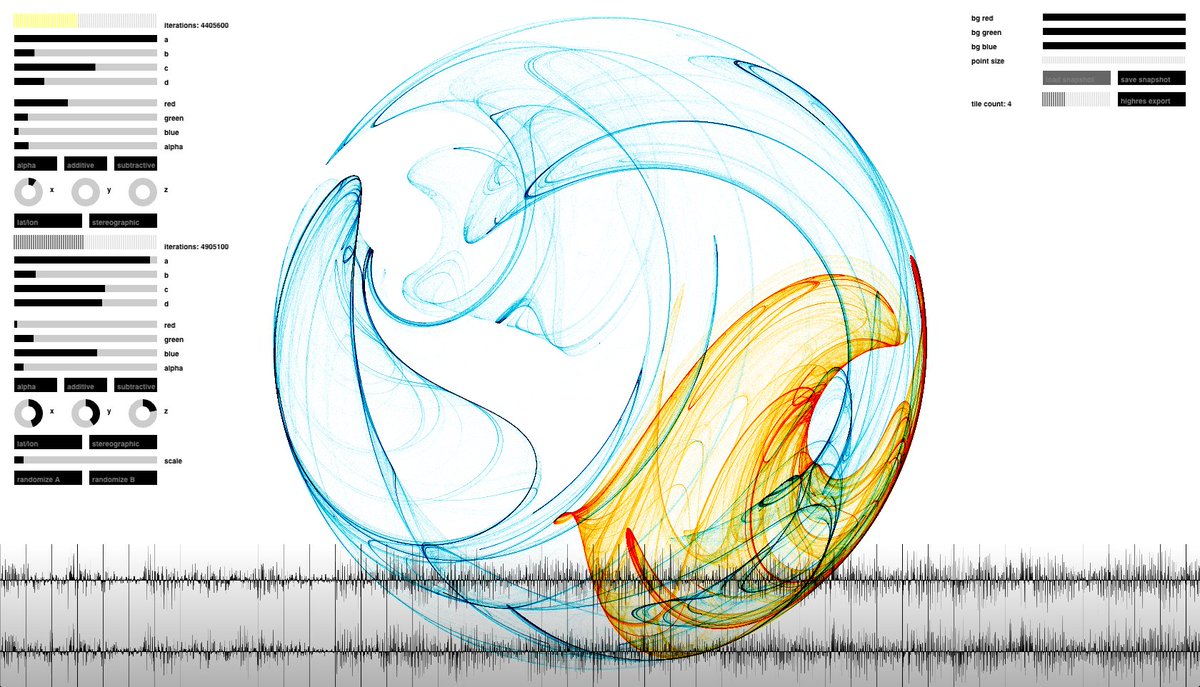

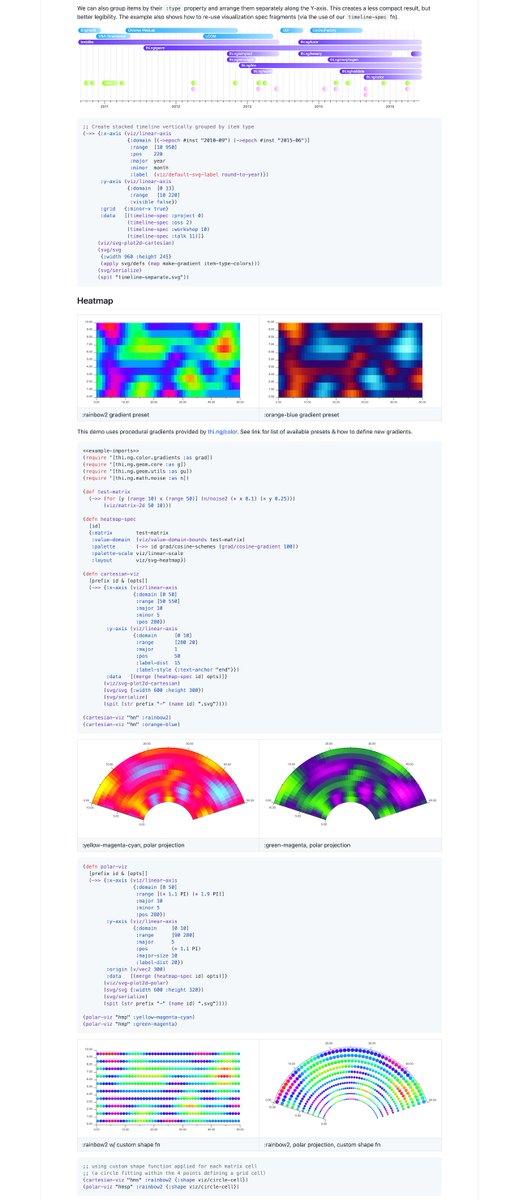

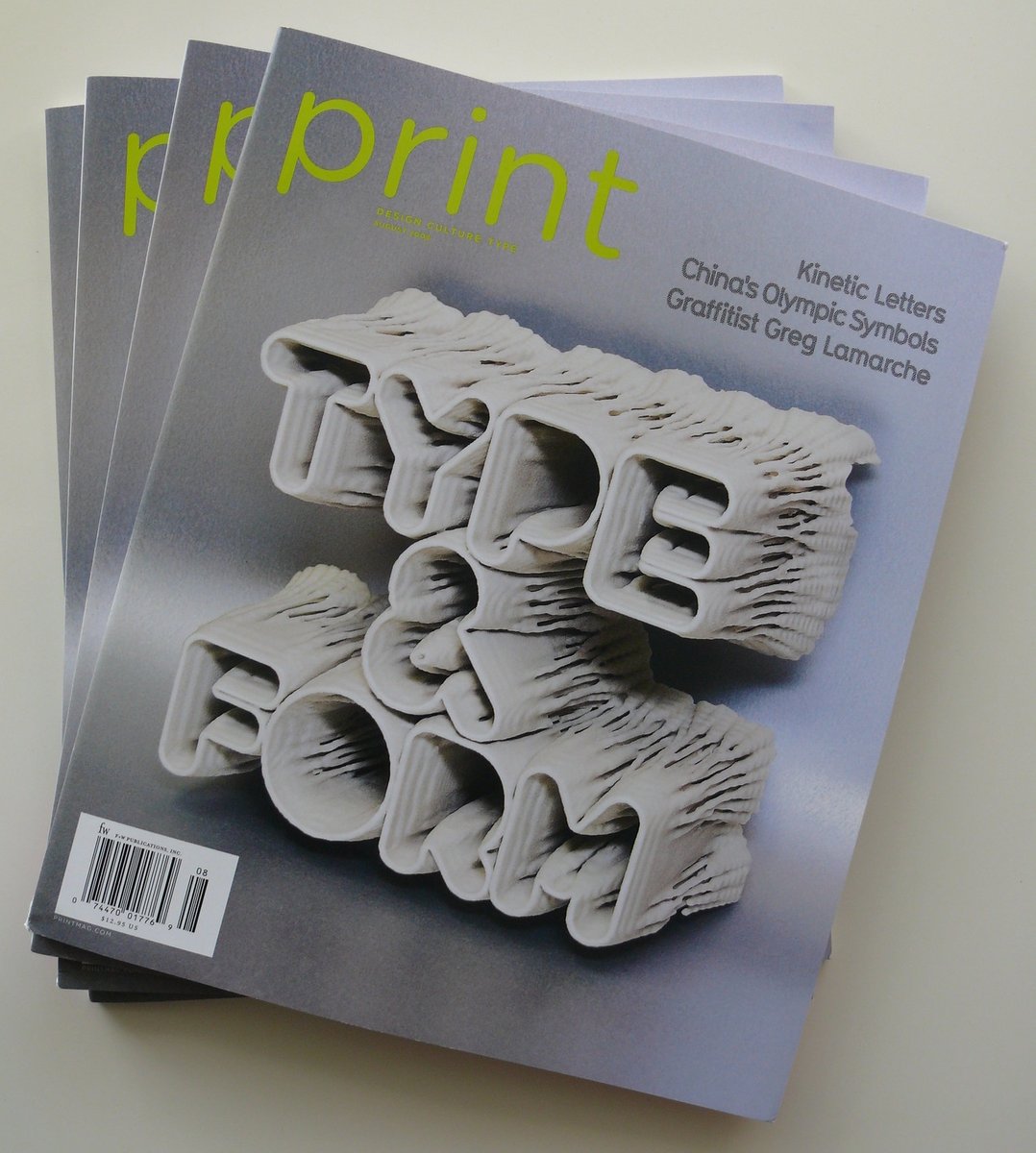
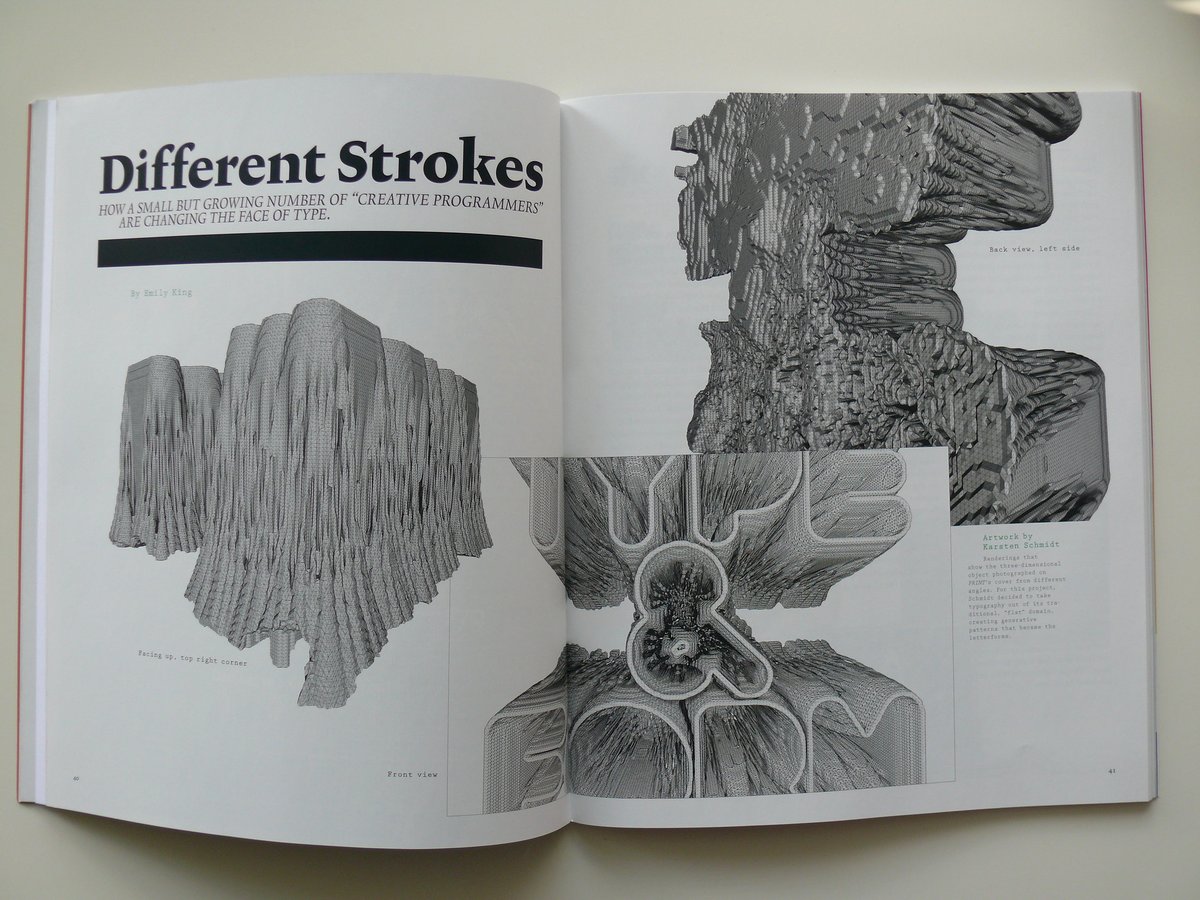

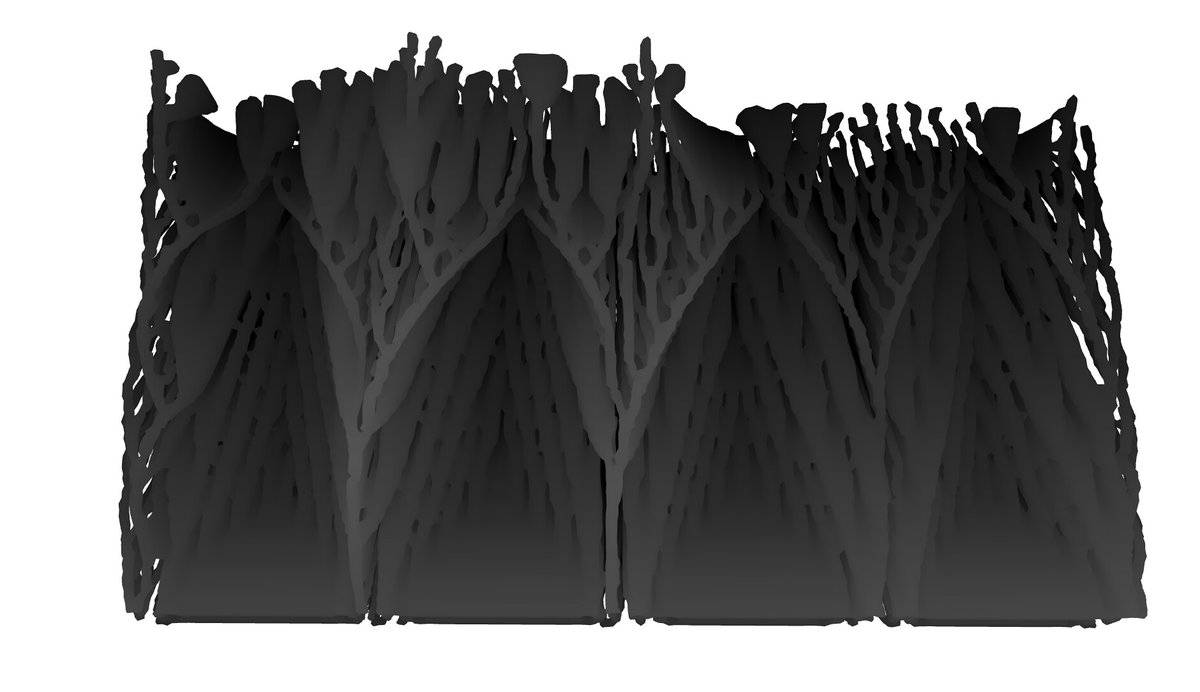

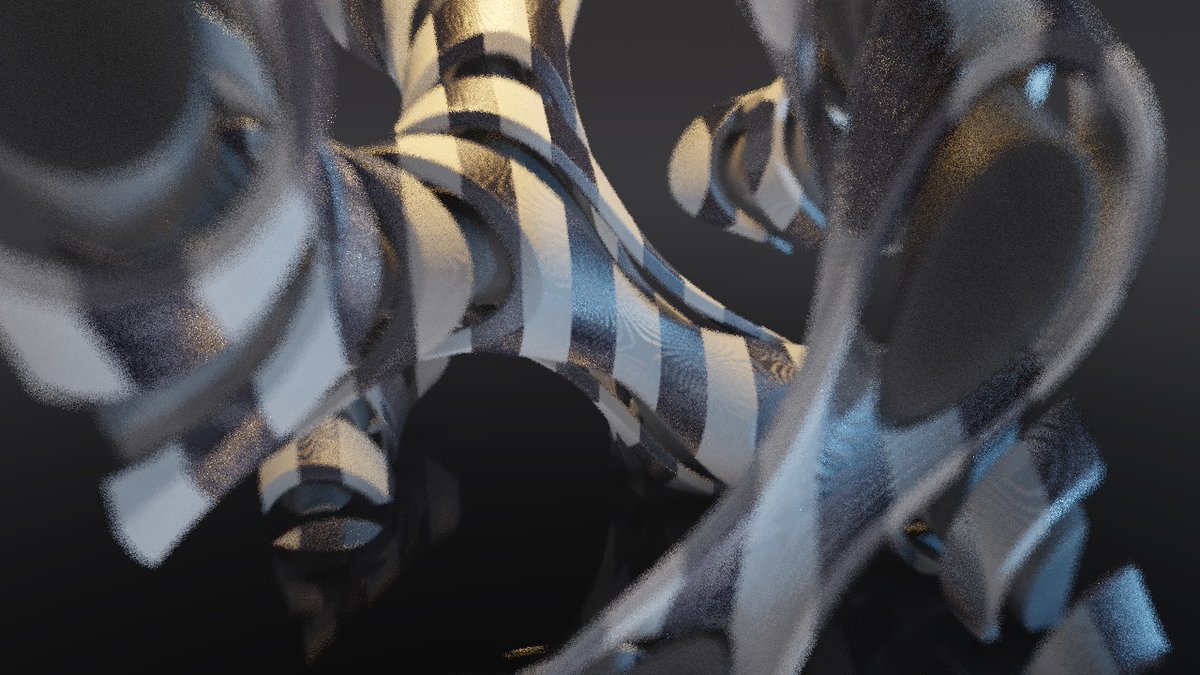
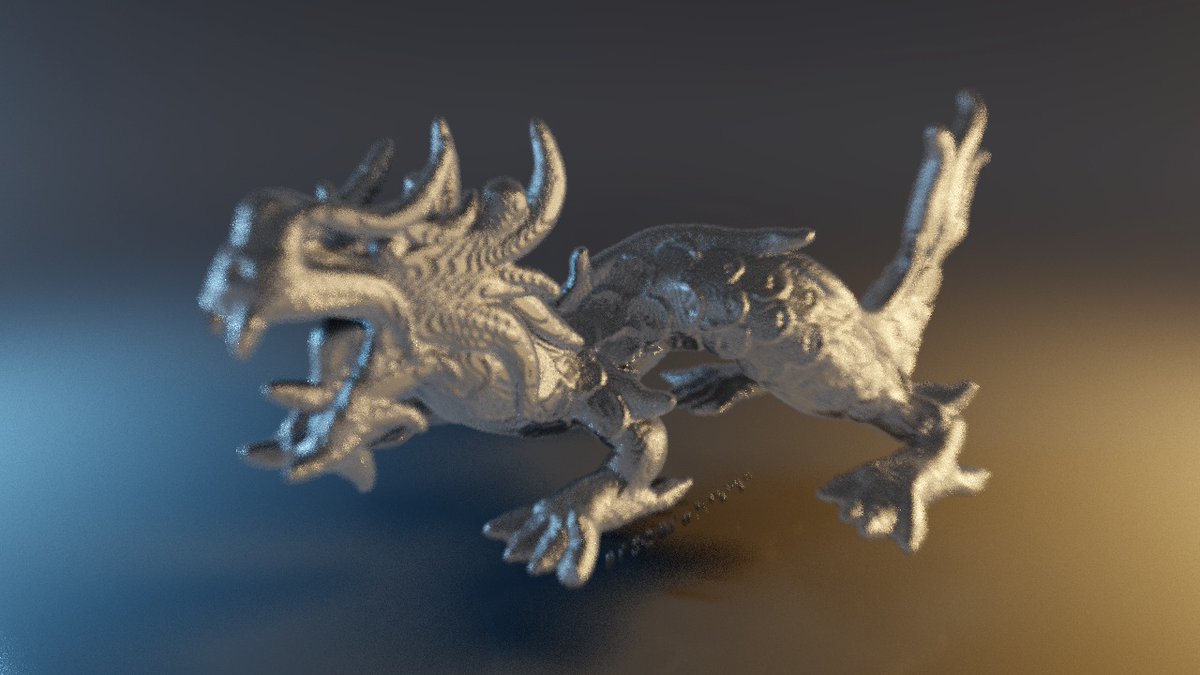
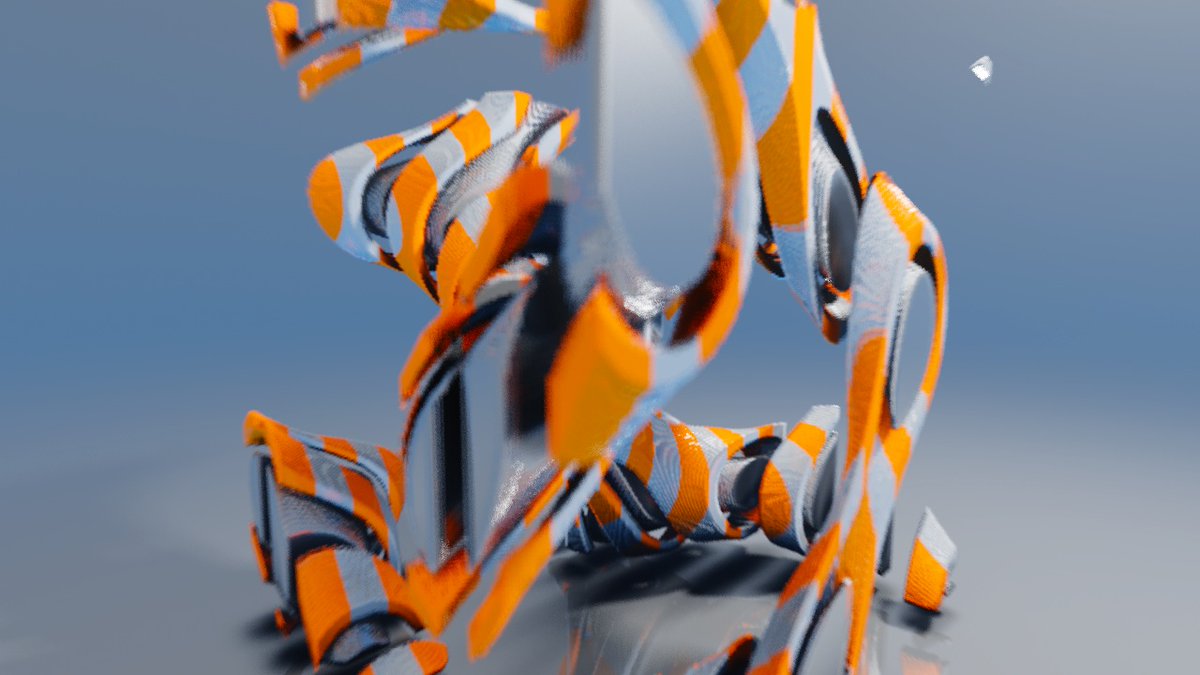
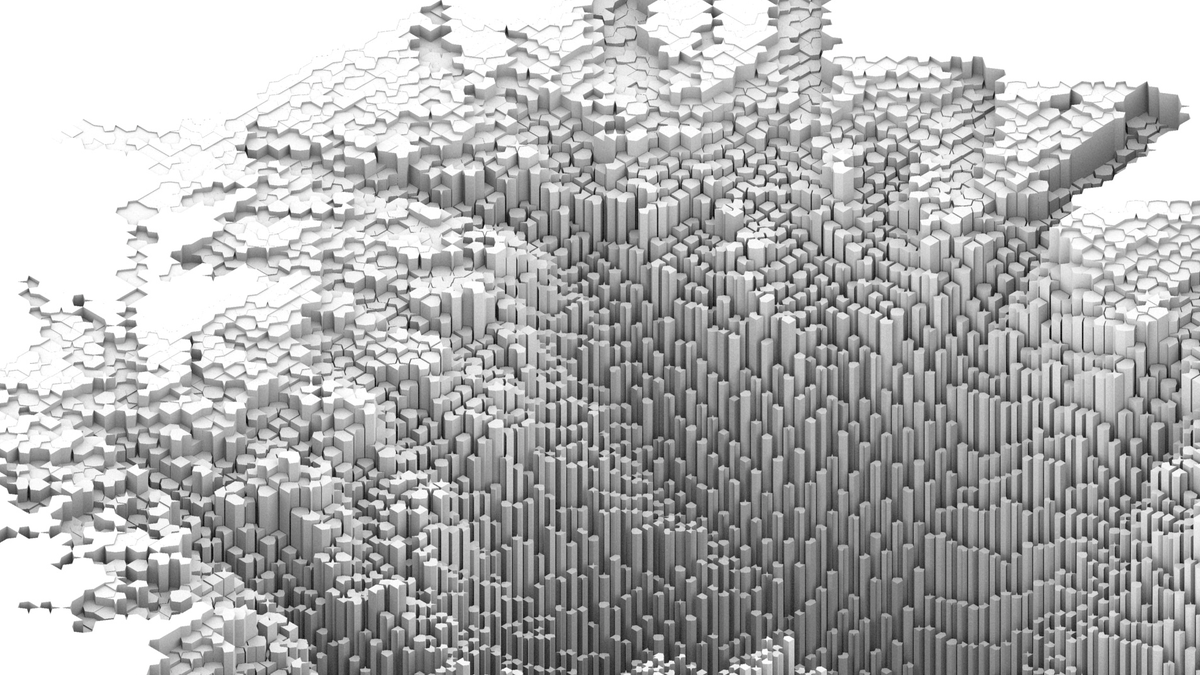

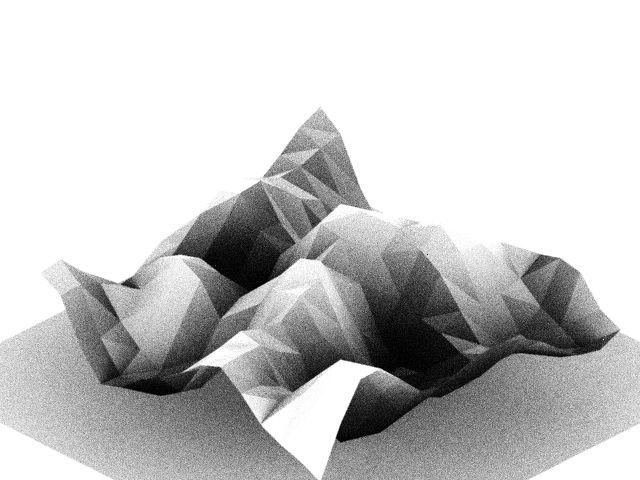
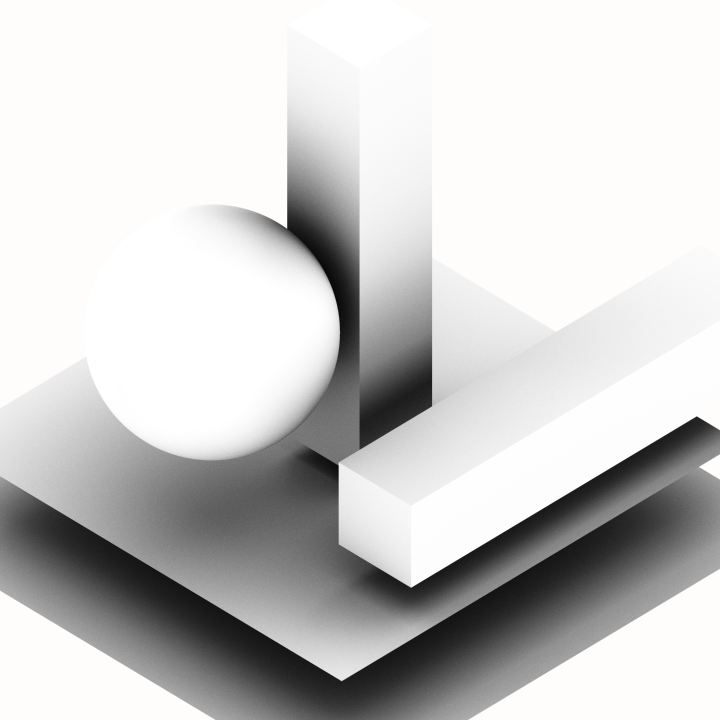
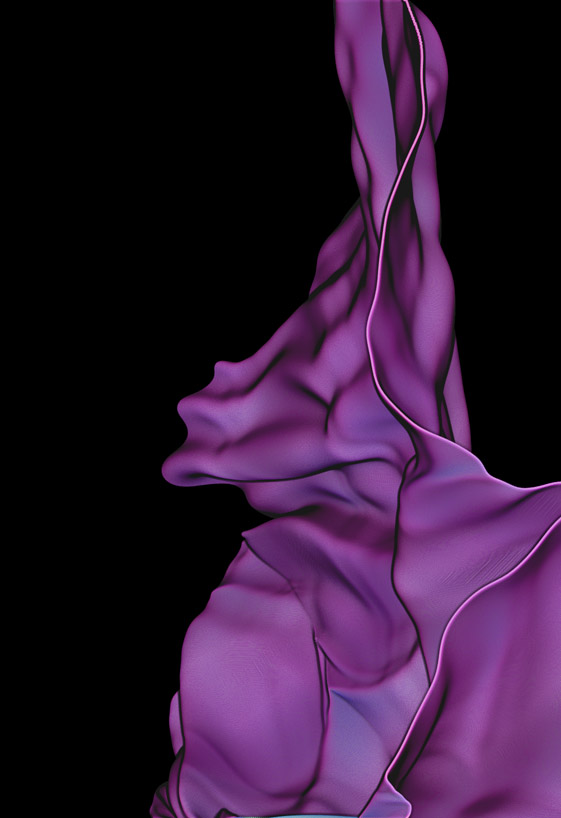 ), we decided to generate & print 5000 unique postcards, each based on a different snapshot of the physics sim driving this single line/rope and here rendered to create a cloth like appearance. Later also shown at SIAD Sheffield" title="22/ To promote the V&A Forever exhibit (https://abs.twimg.com/emoji/v2/... draggable="false" alt="👆" title="Rückhand Zeigefinger nach oben" aria-label="Emoji: Rückhand Zeigefinger nach oben">), we decided to generate & print 5000 unique postcards, each based on a different snapshot of the physics sim driving this single line/rope and here rendered to create a cloth like appearance. Later also shown at SIAD Sheffield">
), we decided to generate & print 5000 unique postcards, each based on a different snapshot of the physics sim driving this single line/rope and here rendered to create a cloth like appearance. Later also shown at SIAD Sheffield" title="22/ To promote the V&A Forever exhibit (https://abs.twimg.com/emoji/v2/... draggable="false" alt="👆" title="Rückhand Zeigefinger nach oben" aria-label="Emoji: Rückhand Zeigefinger nach oben">), we decided to generate & print 5000 unique postcards, each based on a different snapshot of the physics sim driving this single line/rope and here rendered to create a cloth like appearance. Later also shown at SIAD Sheffield">
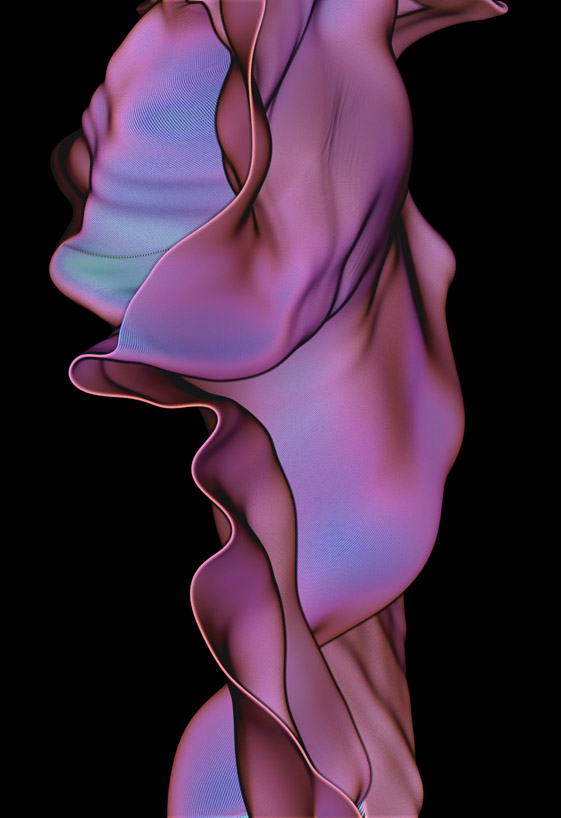 ), we decided to generate & print 5000 unique postcards, each based on a different snapshot of the physics sim driving this single line/rope and here rendered to create a cloth like appearance. Later also shown at SIAD Sheffield" title="22/ To promote the V&A Forever exhibit (https://abs.twimg.com/emoji/v2/... draggable="false" alt="👆" title="Rückhand Zeigefinger nach oben" aria-label="Emoji: Rückhand Zeigefinger nach oben">), we decided to generate & print 5000 unique postcards, each based on a different snapshot of the physics sim driving this single line/rope and here rendered to create a cloth like appearance. Later also shown at SIAD Sheffield">
), we decided to generate & print 5000 unique postcards, each based on a different snapshot of the physics sim driving this single line/rope and here rendered to create a cloth like appearance. Later also shown at SIAD Sheffield" title="22/ To promote the V&A Forever exhibit (https://abs.twimg.com/emoji/v2/... draggable="false" alt="👆" title="Rückhand Zeigefinger nach oben" aria-label="Emoji: Rückhand Zeigefinger nach oben">), we decided to generate & print 5000 unique postcards, each based on a different snapshot of the physics sim driving this single line/rope and here rendered to create a cloth like appearance. Later also shown at SIAD Sheffield">
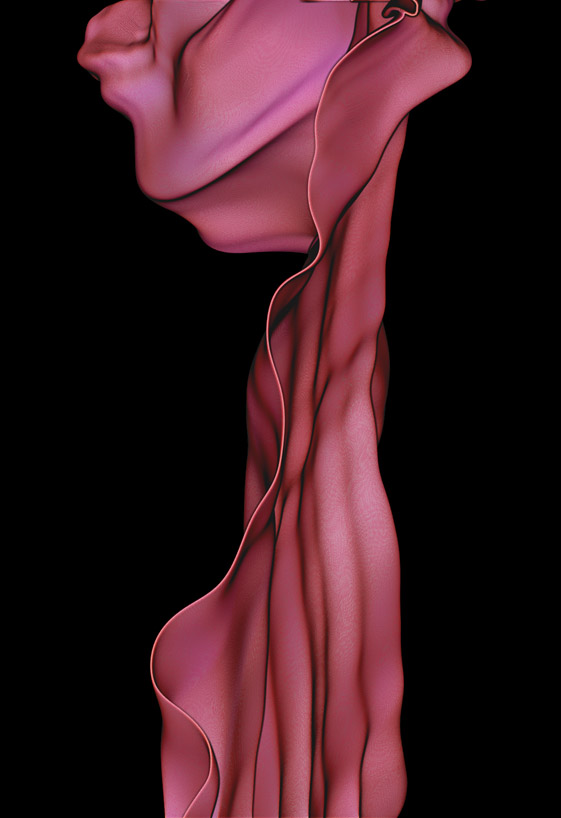 ), we decided to generate & print 5000 unique postcards, each based on a different snapshot of the physics sim driving this single line/rope and here rendered to create a cloth like appearance. Later also shown at SIAD Sheffield" title="22/ To promote the V&A Forever exhibit (https://abs.twimg.com/emoji/v2/... draggable="false" alt="👆" title="Rückhand Zeigefinger nach oben" aria-label="Emoji: Rückhand Zeigefinger nach oben">), we decided to generate & print 5000 unique postcards, each based on a different snapshot of the physics sim driving this single line/rope and here rendered to create a cloth like appearance. Later also shown at SIAD Sheffield">
), we decided to generate & print 5000 unique postcards, each based on a different snapshot of the physics sim driving this single line/rope and here rendered to create a cloth like appearance. Later also shown at SIAD Sheffield" title="22/ To promote the V&A Forever exhibit (https://abs.twimg.com/emoji/v2/... draggable="false" alt="👆" title="Rückhand Zeigefinger nach oben" aria-label="Emoji: Rückhand Zeigefinger nach oben">), we decided to generate & print 5000 unique postcards, each based on a different snapshot of the physics sim driving this single line/rope and here rendered to create a cloth like appearance. Later also shown at SIAD Sheffield">
 ), we decided to generate & print 5000 unique postcards, each based on a different snapshot of the physics sim driving this single line/rope and here rendered to create a cloth like appearance. Later also shown at SIAD Sheffield" title="22/ To promote the V&A Forever exhibit (https://abs.twimg.com/emoji/v2/... draggable="false" alt="👆" title="Rückhand Zeigefinger nach oben" aria-label="Emoji: Rückhand Zeigefinger nach oben">), we decided to generate & print 5000 unique postcards, each based on a different snapshot of the physics sim driving this single line/rope and here rendered to create a cloth like appearance. Later also shown at SIAD Sheffield">
), we decided to generate & print 5000 unique postcards, each based on a different snapshot of the physics sim driving this single line/rope and here rendered to create a cloth like appearance. Later also shown at SIAD Sheffield" title="22/ To promote the V&A Forever exhibit (https://abs.twimg.com/emoji/v2/... draggable="false" alt="👆" title="Rückhand Zeigefinger nach oben" aria-label="Emoji: Rückhand Zeigefinger nach oben">), we decided to generate & print 5000 unique postcards, each based on a different snapshot of the physics sim driving this single line/rope and here rendered to create a cloth like appearance. Later also shown at SIAD Sheffield">

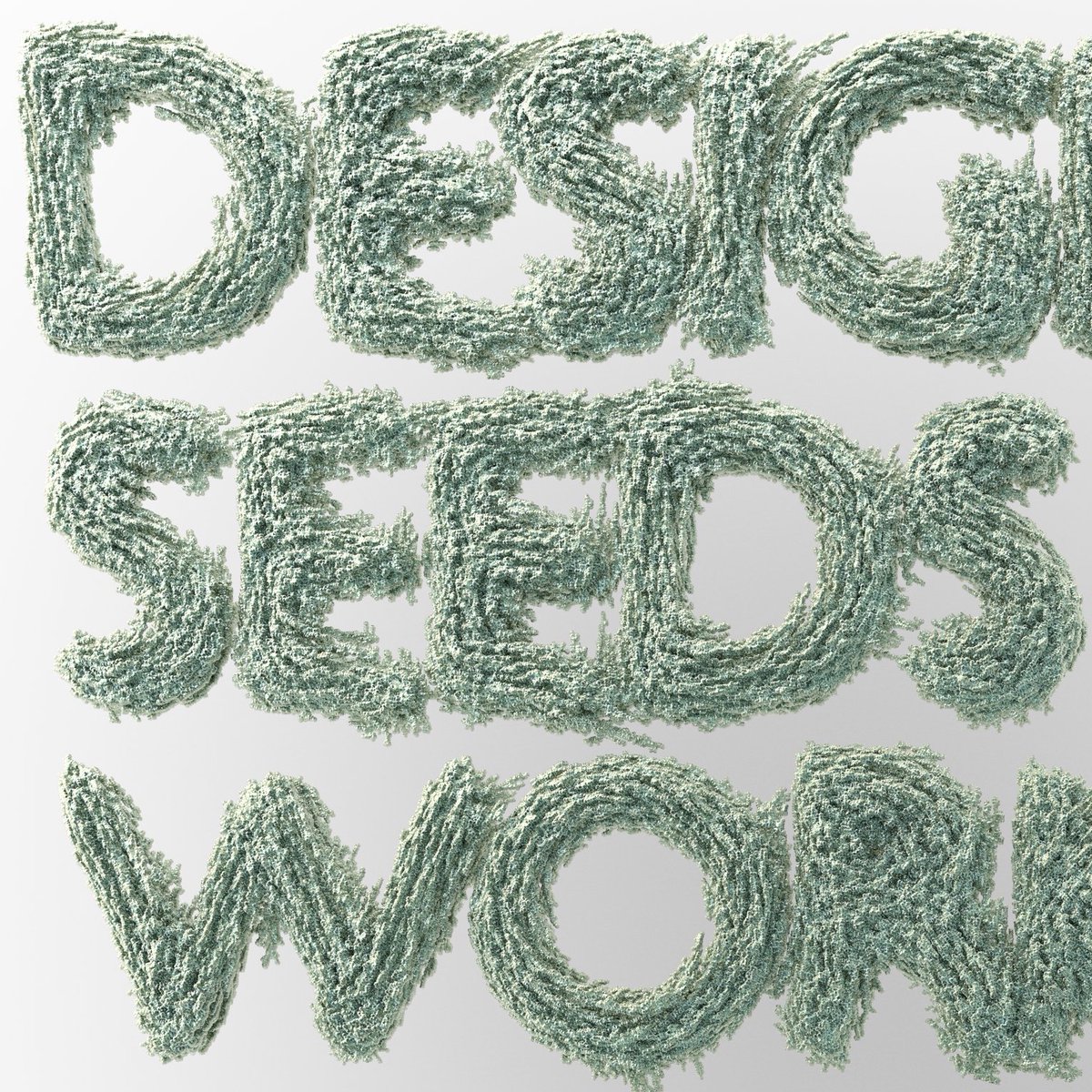
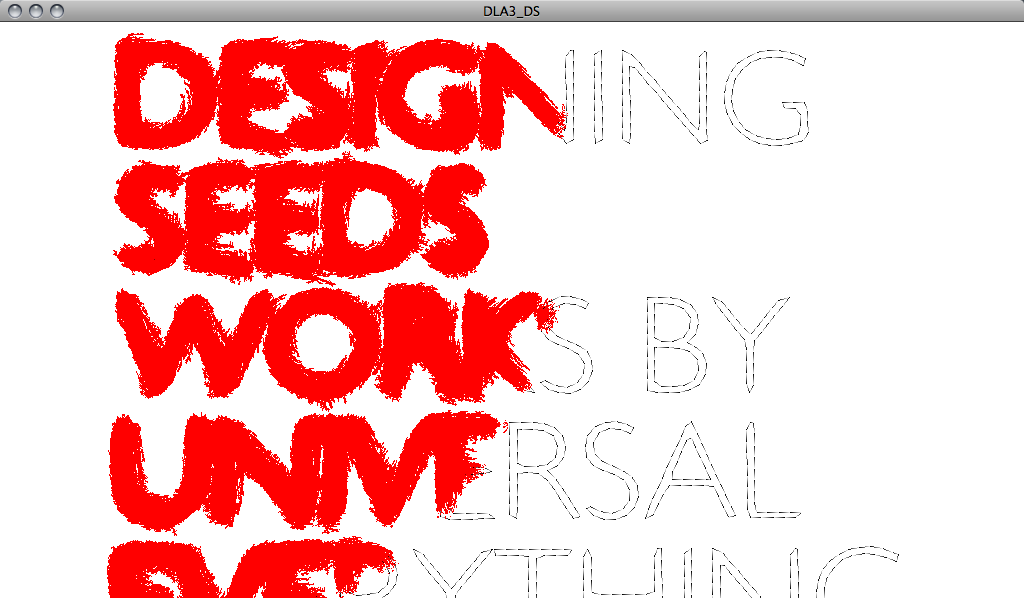

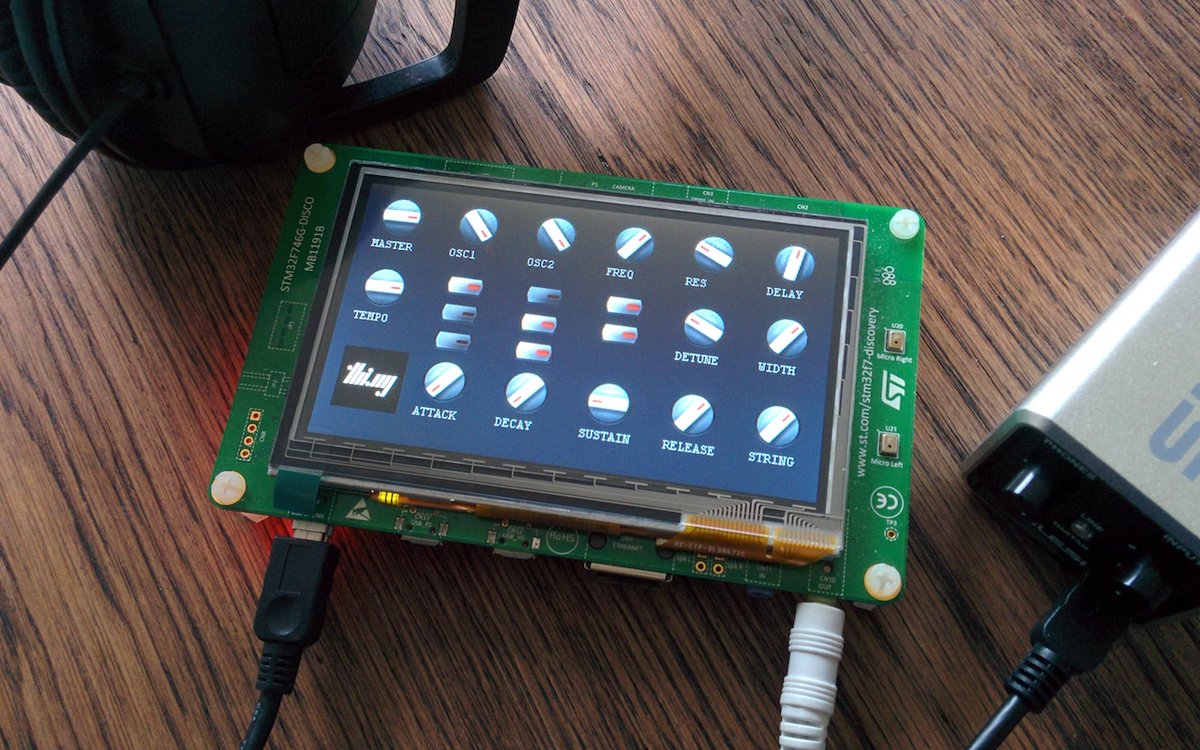
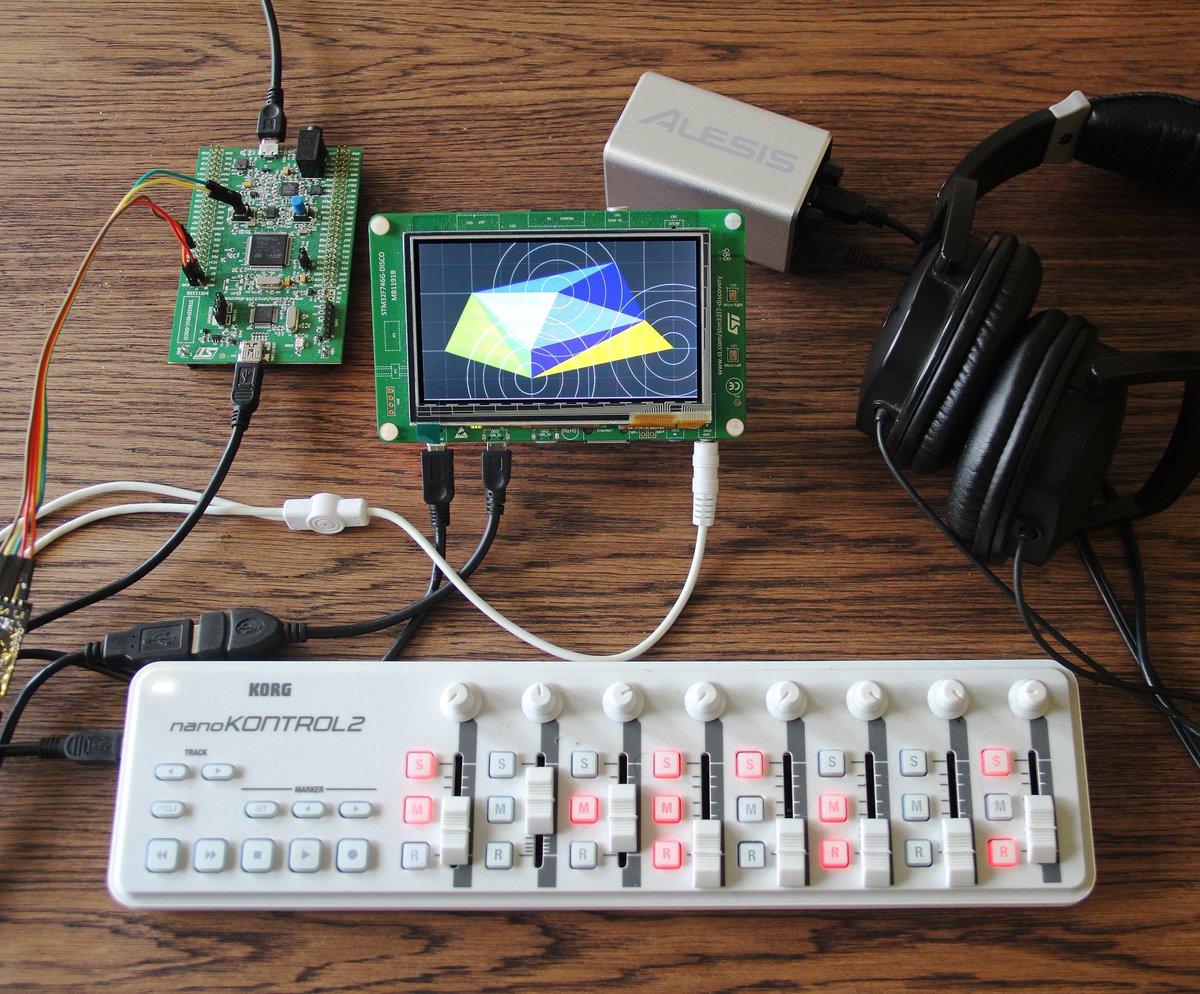
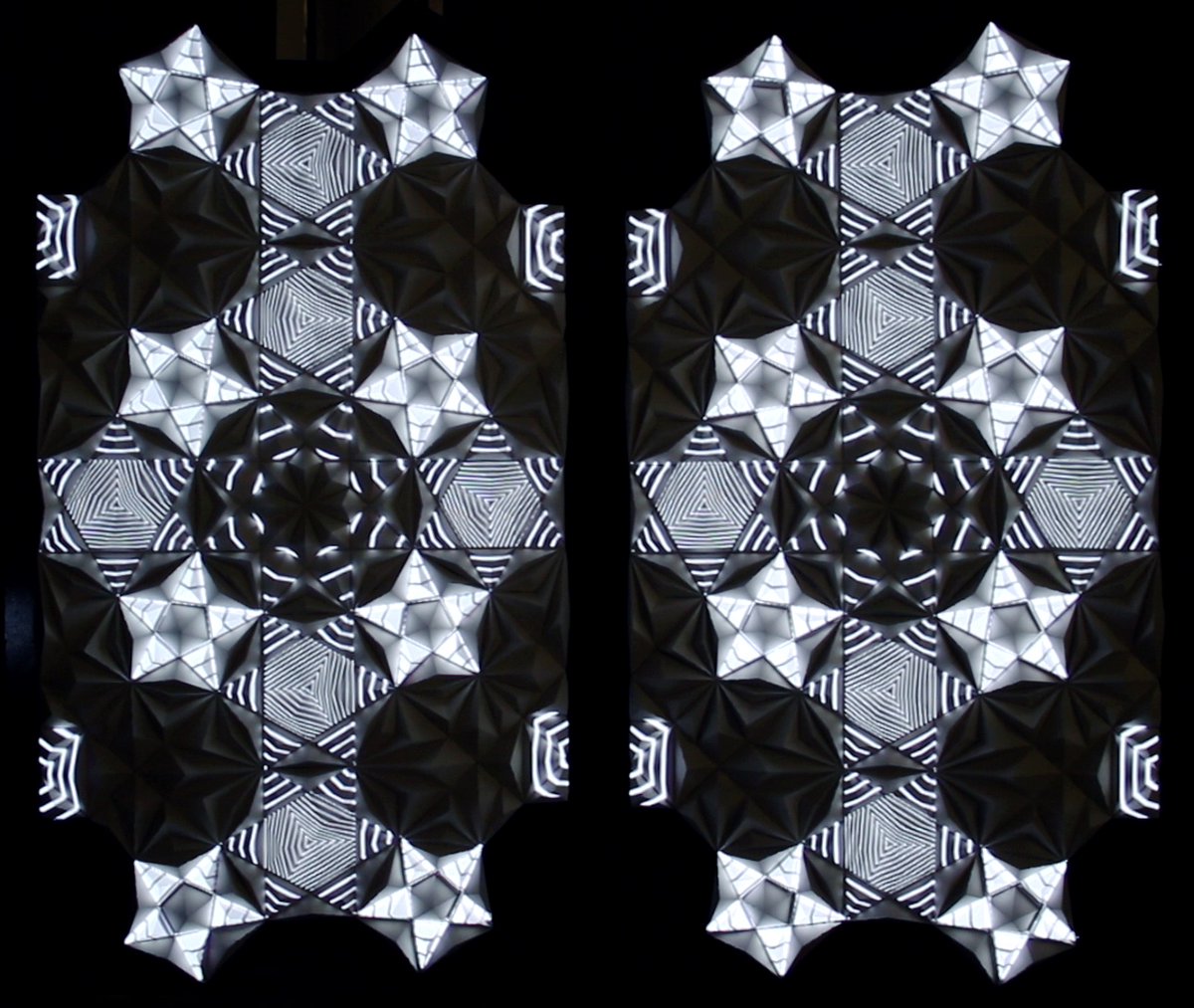 ) was related to the William Morris exhibit & made w/ Java/Clojure/Processing (runtime/server), toxiclibs (geometry, fabrication files for robo & laser cutters), JS (iPad UI). Massive thanks to @manomine, @sermad & @supernat13 for helping w/ setup! https://abs.twimg.com/emoji/v2/... draggable="false" alt="😍" title="Lächelndes Gesicht mit herzförmigen Augen" aria-label="Emoji: Lächelndes Gesicht mit herzförmigen Augen">" title="25a/ This install (https://abs.twimg.com/emoji/v2/... draggable="false" alt="👆" title="Rückhand Zeigefinger nach oben" aria-label="Emoji: Rückhand Zeigefinger nach oben">) was related to the William Morris exhibit & made w/ Java/Clojure/Processing (runtime/server), toxiclibs (geometry, fabrication files for robo & laser cutters), JS (iPad UI). Massive thanks to @manomine, @sermad & @supernat13 for helping w/ setup! https://abs.twimg.com/emoji/v2/... draggable="false" alt="😍" title="Lächelndes Gesicht mit herzförmigen Augen" aria-label="Emoji: Lächelndes Gesicht mit herzförmigen Augen">">
) was related to the William Morris exhibit & made w/ Java/Clojure/Processing (runtime/server), toxiclibs (geometry, fabrication files for robo & laser cutters), JS (iPad UI). Massive thanks to @manomine, @sermad & @supernat13 for helping w/ setup! https://abs.twimg.com/emoji/v2/... draggable="false" alt="😍" title="Lächelndes Gesicht mit herzförmigen Augen" aria-label="Emoji: Lächelndes Gesicht mit herzförmigen Augen">" title="25a/ This install (https://abs.twimg.com/emoji/v2/... draggable="false" alt="👆" title="Rückhand Zeigefinger nach oben" aria-label="Emoji: Rückhand Zeigefinger nach oben">) was related to the William Morris exhibit & made w/ Java/Clojure/Processing (runtime/server), toxiclibs (geometry, fabrication files for robo & laser cutters), JS (iPad UI). Massive thanks to @manomine, @sermad & @supernat13 for helping w/ setup! https://abs.twimg.com/emoji/v2/... draggable="false" alt="😍" title="Lächelndes Gesicht mit herzförmigen Augen" aria-label="Emoji: Lächelndes Gesicht mit herzförmigen Augen">">
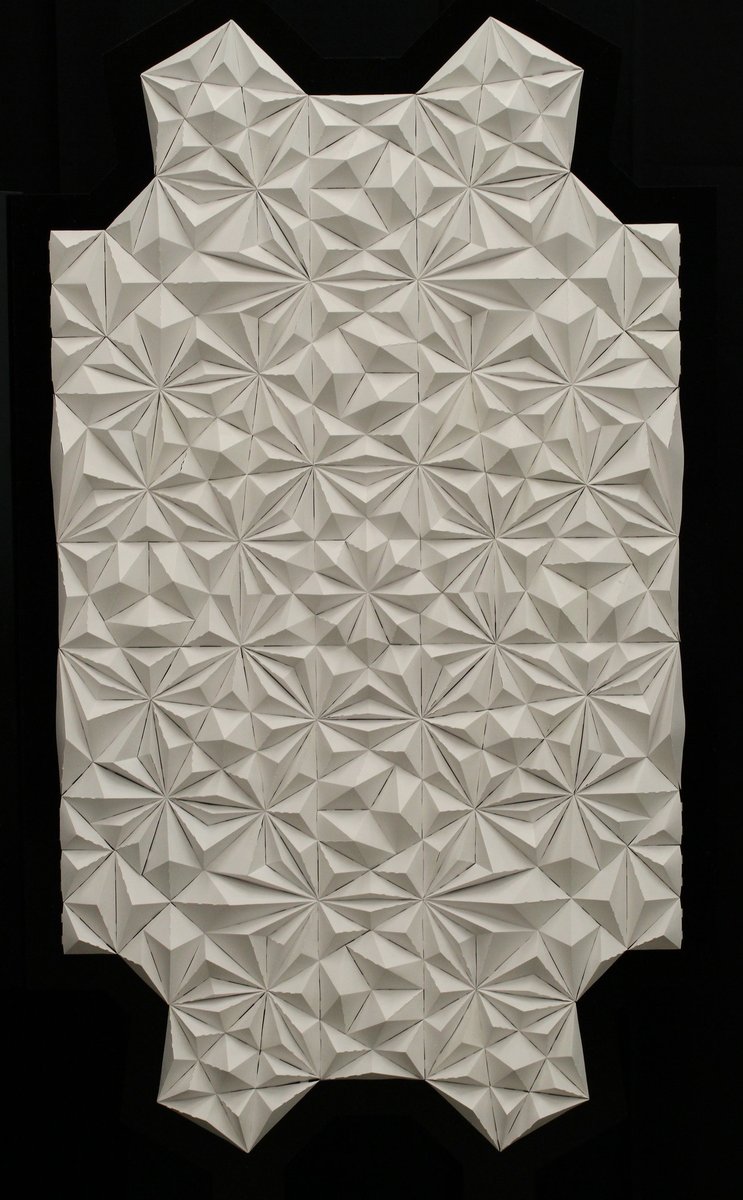 ) was related to the William Morris exhibit & made w/ Java/Clojure/Processing (runtime/server), toxiclibs (geometry, fabrication files for robo & laser cutters), JS (iPad UI). Massive thanks to @manomine, @sermad & @supernat13 for helping w/ setup! https://abs.twimg.com/emoji/v2/... draggable="false" alt="😍" title="Lächelndes Gesicht mit herzförmigen Augen" aria-label="Emoji: Lächelndes Gesicht mit herzförmigen Augen">" title="25a/ This install (https://abs.twimg.com/emoji/v2/... draggable="false" alt="👆" title="Rückhand Zeigefinger nach oben" aria-label="Emoji: Rückhand Zeigefinger nach oben">) was related to the William Morris exhibit & made w/ Java/Clojure/Processing (runtime/server), toxiclibs (geometry, fabrication files for robo & laser cutters), JS (iPad UI). Massive thanks to @manomine, @sermad & @supernat13 for helping w/ setup! https://abs.twimg.com/emoji/v2/... draggable="false" alt="😍" title="Lächelndes Gesicht mit herzförmigen Augen" aria-label="Emoji: Lächelndes Gesicht mit herzförmigen Augen">">
) was related to the William Morris exhibit & made w/ Java/Clojure/Processing (runtime/server), toxiclibs (geometry, fabrication files for robo & laser cutters), JS (iPad UI). Massive thanks to @manomine, @sermad & @supernat13 for helping w/ setup! https://abs.twimg.com/emoji/v2/... draggable="false" alt="😍" title="Lächelndes Gesicht mit herzförmigen Augen" aria-label="Emoji: Lächelndes Gesicht mit herzförmigen Augen">" title="25a/ This install (https://abs.twimg.com/emoji/v2/... draggable="false" alt="👆" title="Rückhand Zeigefinger nach oben" aria-label="Emoji: Rückhand Zeigefinger nach oben">) was related to the William Morris exhibit & made w/ Java/Clojure/Processing (runtime/server), toxiclibs (geometry, fabrication files for robo & laser cutters), JS (iPad UI). Massive thanks to @manomine, @sermad & @supernat13 for helping w/ setup! https://abs.twimg.com/emoji/v2/... draggable="false" alt="😍" title="Lächelndes Gesicht mit herzförmigen Augen" aria-label="Emoji: Lächelndes Gesicht mit herzförmigen Augen">">
 ) was related to the William Morris exhibit & made w/ Java/Clojure/Processing (runtime/server), toxiclibs (geometry, fabrication files for robo & laser cutters), JS (iPad UI). Massive thanks to @manomine, @sermad & @supernat13 for helping w/ setup! https://abs.twimg.com/emoji/v2/... draggable="false" alt="😍" title="Lächelndes Gesicht mit herzförmigen Augen" aria-label="Emoji: Lächelndes Gesicht mit herzförmigen Augen">" title="25a/ This install (https://abs.twimg.com/emoji/v2/... draggable="false" alt="👆" title="Rückhand Zeigefinger nach oben" aria-label="Emoji: Rückhand Zeigefinger nach oben">) was related to the William Morris exhibit & made w/ Java/Clojure/Processing (runtime/server), toxiclibs (geometry, fabrication files for robo & laser cutters), JS (iPad UI). Massive thanks to @manomine, @sermad & @supernat13 for helping w/ setup! https://abs.twimg.com/emoji/v2/... draggable="false" alt="😍" title="Lächelndes Gesicht mit herzförmigen Augen" aria-label="Emoji: Lächelndes Gesicht mit herzförmigen Augen">">
) was related to the William Morris exhibit & made w/ Java/Clojure/Processing (runtime/server), toxiclibs (geometry, fabrication files for robo & laser cutters), JS (iPad UI). Massive thanks to @manomine, @sermad & @supernat13 for helping w/ setup! https://abs.twimg.com/emoji/v2/... draggable="false" alt="😍" title="Lächelndes Gesicht mit herzförmigen Augen" aria-label="Emoji: Lächelndes Gesicht mit herzförmigen Augen">" title="25a/ This install (https://abs.twimg.com/emoji/v2/... draggable="false" alt="👆" title="Rückhand Zeigefinger nach oben" aria-label="Emoji: Rückhand Zeigefinger nach oben">) was related to the William Morris exhibit & made w/ Java/Clojure/Processing (runtime/server), toxiclibs (geometry, fabrication files for robo & laser cutters), JS (iPad UI). Massive thanks to @manomine, @sermad & @supernat13 for helping w/ setup! https://abs.twimg.com/emoji/v2/... draggable="false" alt="😍" title="Lächelndes Gesicht mit herzförmigen Augen" aria-label="Emoji: Lächelndes Gesicht mit herzförmigen Augen">">
 ) was related to the William Morris exhibit & made w/ Java/Clojure/Processing (runtime/server), toxiclibs (geometry, fabrication files for robo & laser cutters), JS (iPad UI). Massive thanks to @manomine, @sermad & @supernat13 for helping w/ setup! https://abs.twimg.com/emoji/v2/... draggable="false" alt="😍" title="Lächelndes Gesicht mit herzförmigen Augen" aria-label="Emoji: Lächelndes Gesicht mit herzförmigen Augen">" title="25a/ This install (https://abs.twimg.com/emoji/v2/... draggable="false" alt="👆" title="Rückhand Zeigefinger nach oben" aria-label="Emoji: Rückhand Zeigefinger nach oben">) was related to the William Morris exhibit & made w/ Java/Clojure/Processing (runtime/server), toxiclibs (geometry, fabrication files for robo & laser cutters), JS (iPad UI). Massive thanks to @manomine, @sermad & @supernat13 for helping w/ setup! https://abs.twimg.com/emoji/v2/... draggable="false" alt="😍" title="Lächelndes Gesicht mit herzförmigen Augen" aria-label="Emoji: Lächelndes Gesicht mit herzförmigen Augen">">
) was related to the William Morris exhibit & made w/ Java/Clojure/Processing (runtime/server), toxiclibs (geometry, fabrication files for robo & laser cutters), JS (iPad UI). Massive thanks to @manomine, @sermad & @supernat13 for helping w/ setup! https://abs.twimg.com/emoji/v2/... draggable="false" alt="😍" title="Lächelndes Gesicht mit herzförmigen Augen" aria-label="Emoji: Lächelndes Gesicht mit herzförmigen Augen">" title="25a/ This install (https://abs.twimg.com/emoji/v2/... draggable="false" alt="👆" title="Rückhand Zeigefinger nach oben" aria-label="Emoji: Rückhand Zeigefinger nach oben">) was related to the William Morris exhibit & made w/ Java/Clojure/Processing (runtime/server), toxiclibs (geometry, fabrication files for robo & laser cutters), JS (iPad UI). Massive thanks to @manomine, @sermad & @supernat13 for helping w/ setup! https://abs.twimg.com/emoji/v2/... draggable="false" alt="😍" title="Lächelndes Gesicht mit herzförmigen Augen" aria-label="Emoji: Lächelndes Gesicht mit herzförmigen Augen">">

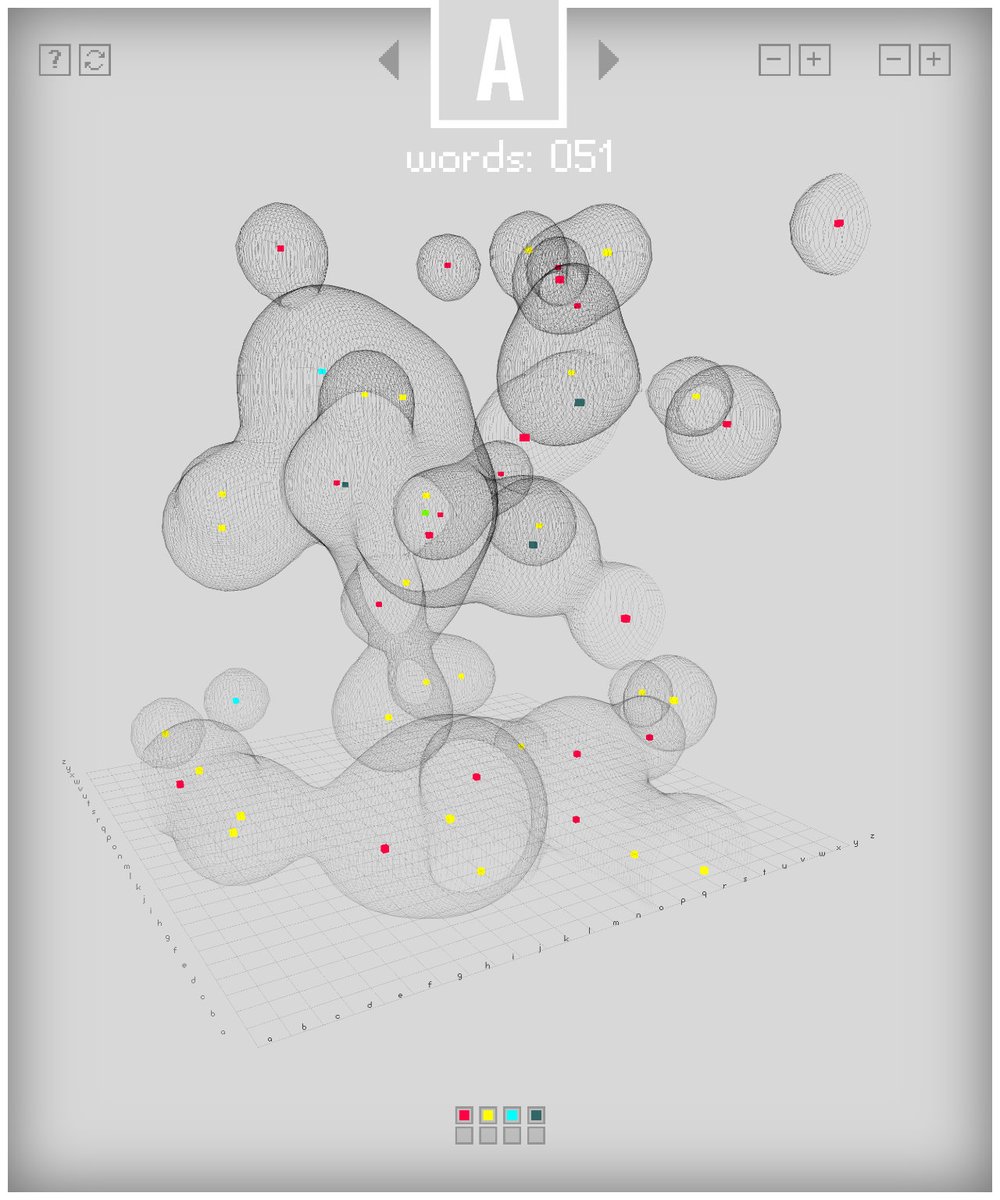
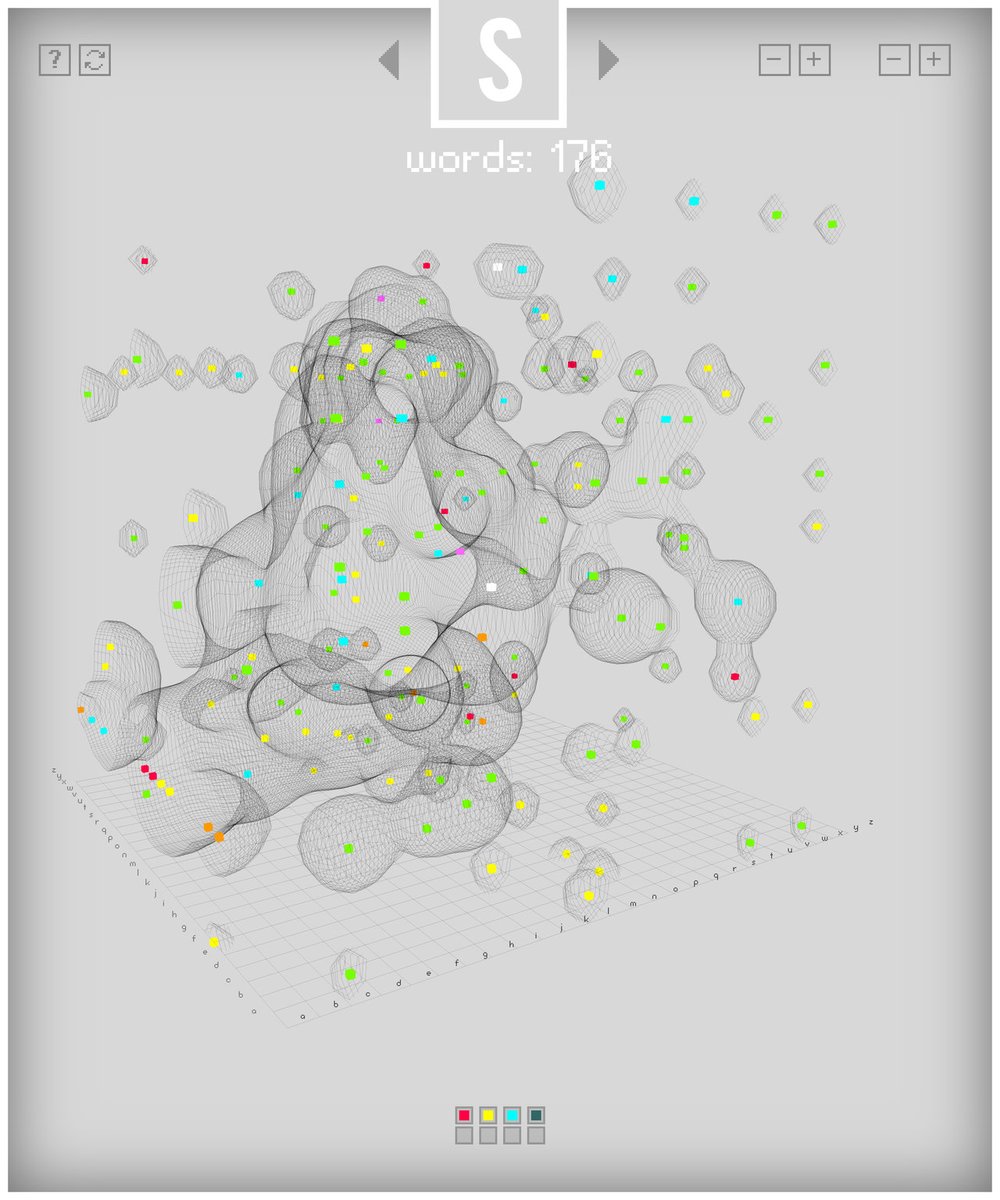
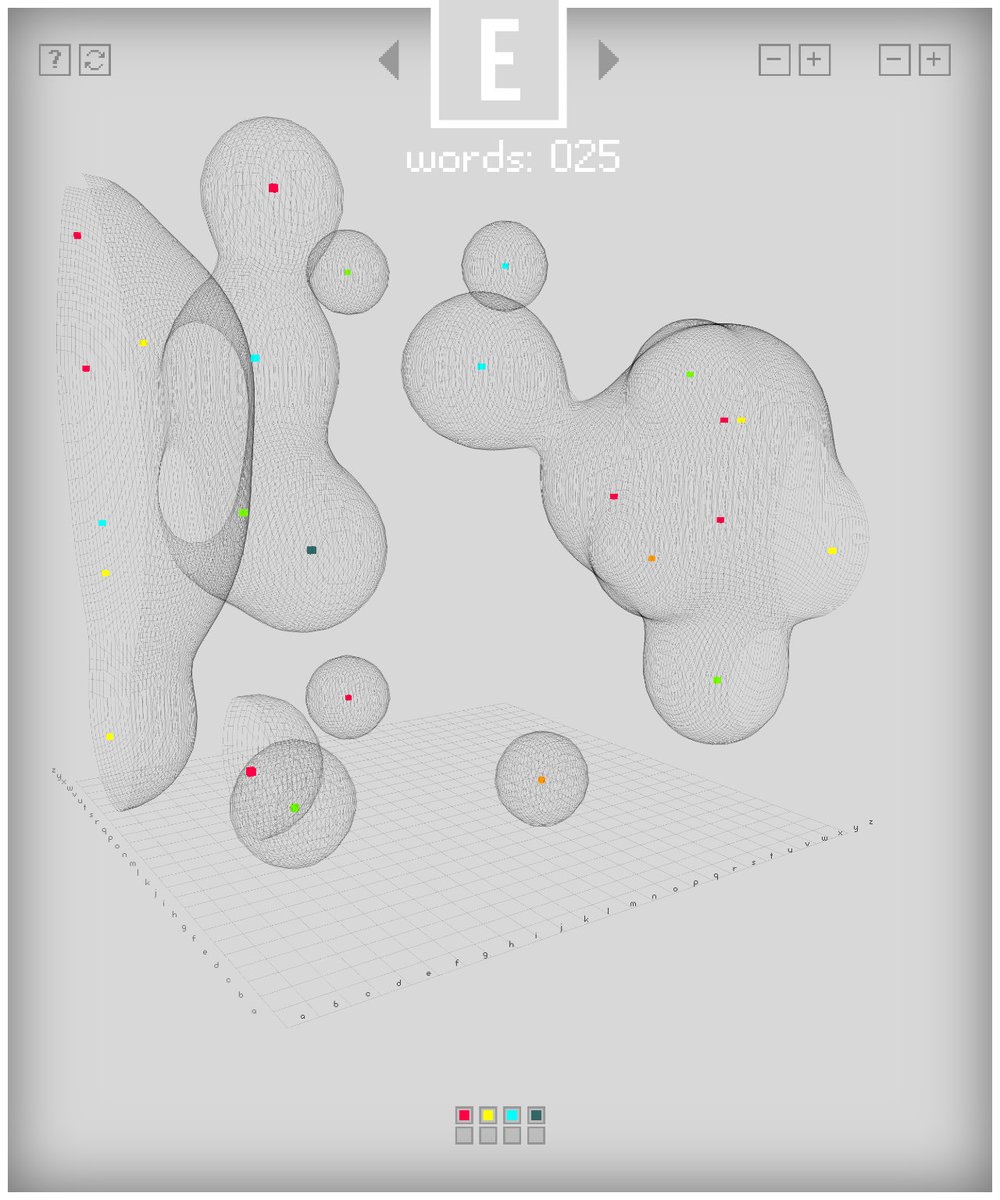

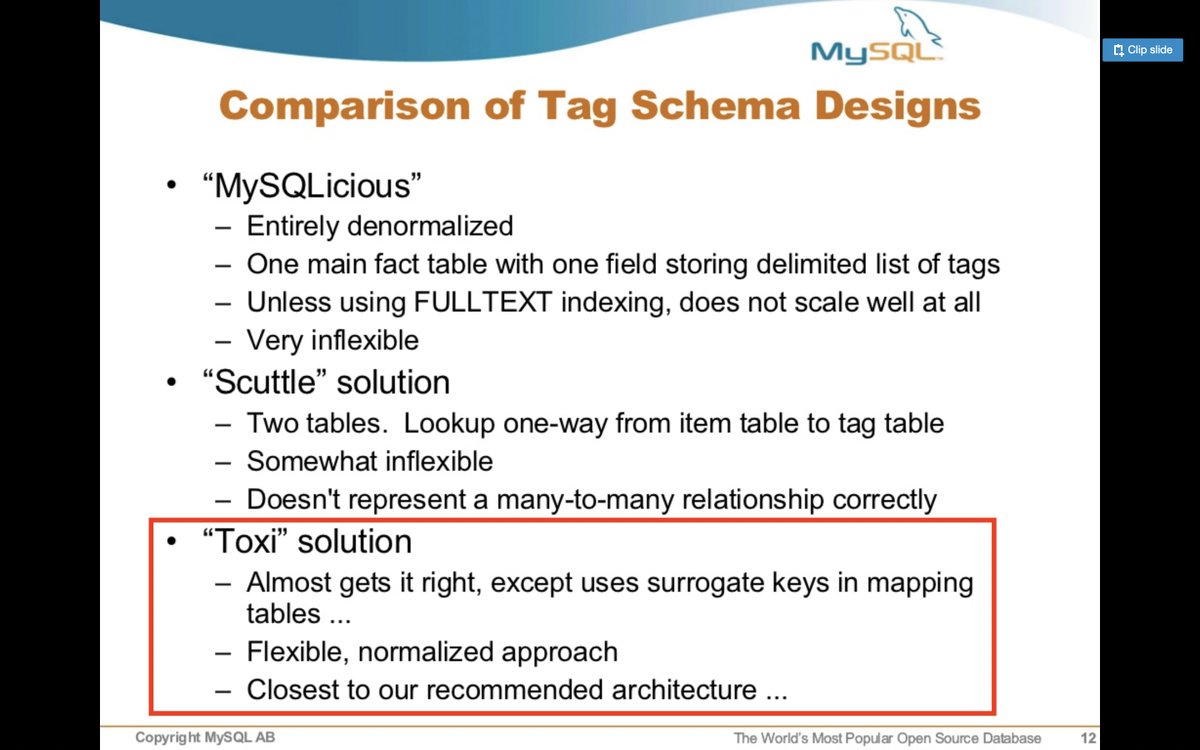 ) in this field: https://www.slideshare.net/edbond/ta..." title="30/ Having implemented numerous folksonomy/tagging systems over the years (in many different databases), I& #39;m still proud of the name-dropping in official MySQL slide decks about my earliest attempts/solutions ("getting it almost right" https://abs.twimg.com/emoji/v2/... draggable="false" alt="😂" title="Gesicht mit Freudentränen" aria-label="Emoji: Gesicht mit Freudentränen">) in this field: https://www.slideshare.net/edbond/ta...">
) in this field: https://www.slideshare.net/edbond/ta..." title="30/ Having implemented numerous folksonomy/tagging systems over the years (in many different databases), I& #39;m still proud of the name-dropping in official MySQL slide decks about my earliest attempts/solutions ("getting it almost right" https://abs.twimg.com/emoji/v2/... draggable="false" alt="😂" title="Gesicht mit Freudentränen" aria-label="Emoji: Gesicht mit Freudentränen">) in this field: https://www.slideshare.net/edbond/ta...">
 ) in this field: https://www.slideshare.net/edbond/ta..." title="30/ Having implemented numerous folksonomy/tagging systems over the years (in many different databases), I& #39;m still proud of the name-dropping in official MySQL slide decks about my earliest attempts/solutions ("getting it almost right" https://abs.twimg.com/emoji/v2/... draggable="false" alt="😂" title="Gesicht mit Freudentränen" aria-label="Emoji: Gesicht mit Freudentränen">) in this field: https://www.slideshare.net/edbond/ta...">
) in this field: https://www.slideshare.net/edbond/ta..." title="30/ Having implemented numerous folksonomy/tagging systems over the years (in many different databases), I& #39;m still proud of the name-dropping in official MySQL slide decks about my earliest attempts/solutions ("getting it almost right" https://abs.twimg.com/emoji/v2/... draggable="false" alt="😂" title="Gesicht mit Freudentränen" aria-label="Emoji: Gesicht mit Freudentränen">) in this field: https://www.slideshare.net/edbond/ta...">
